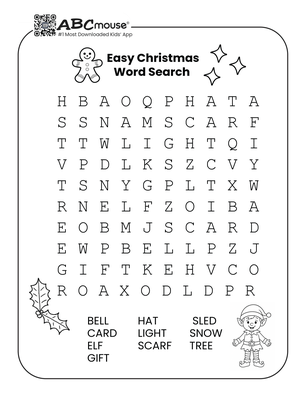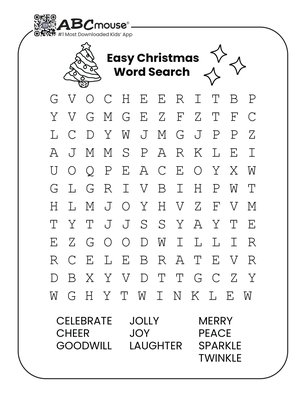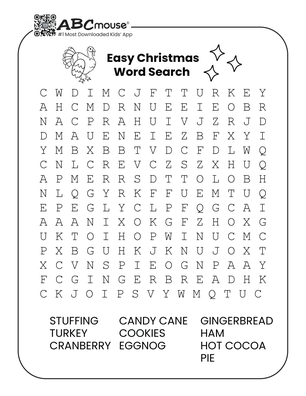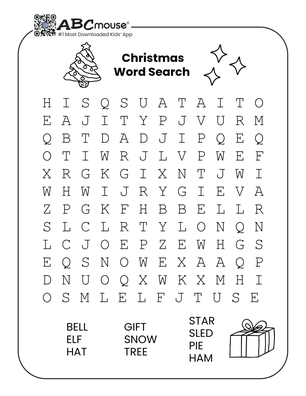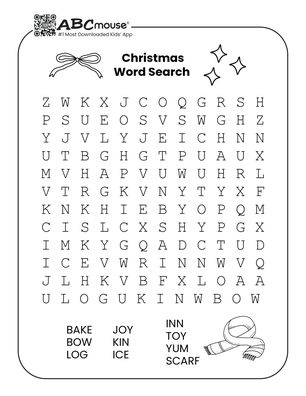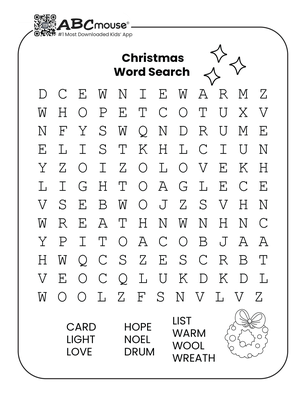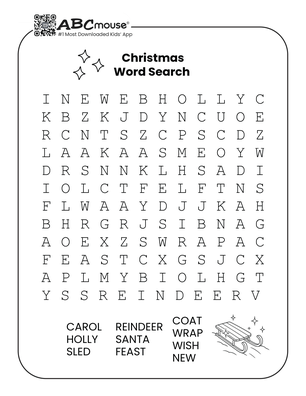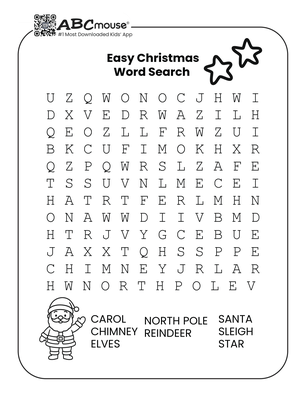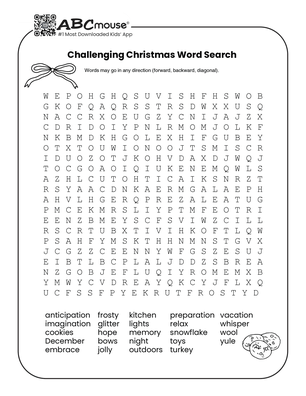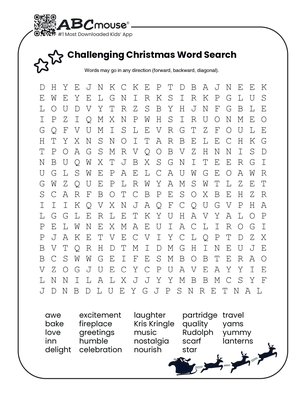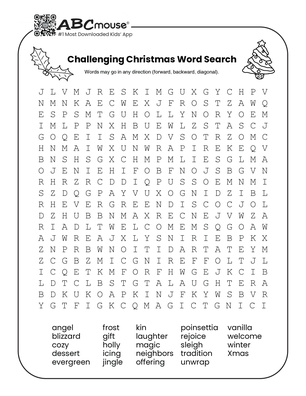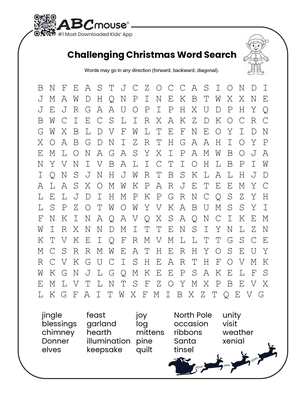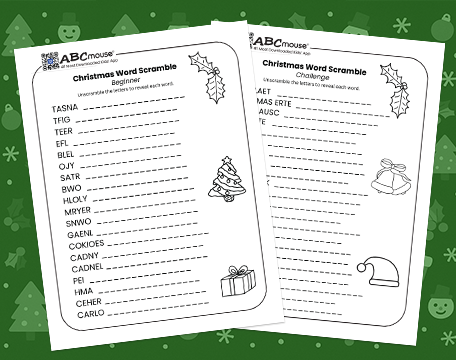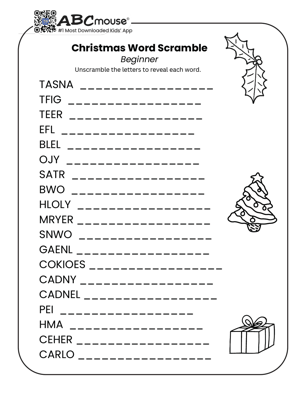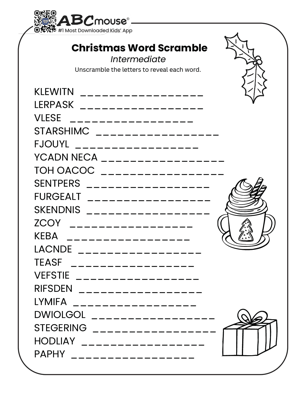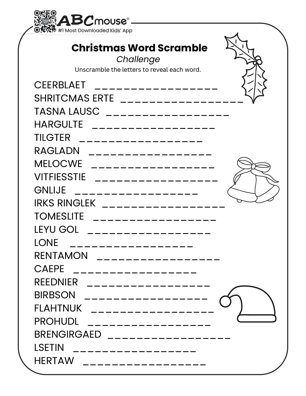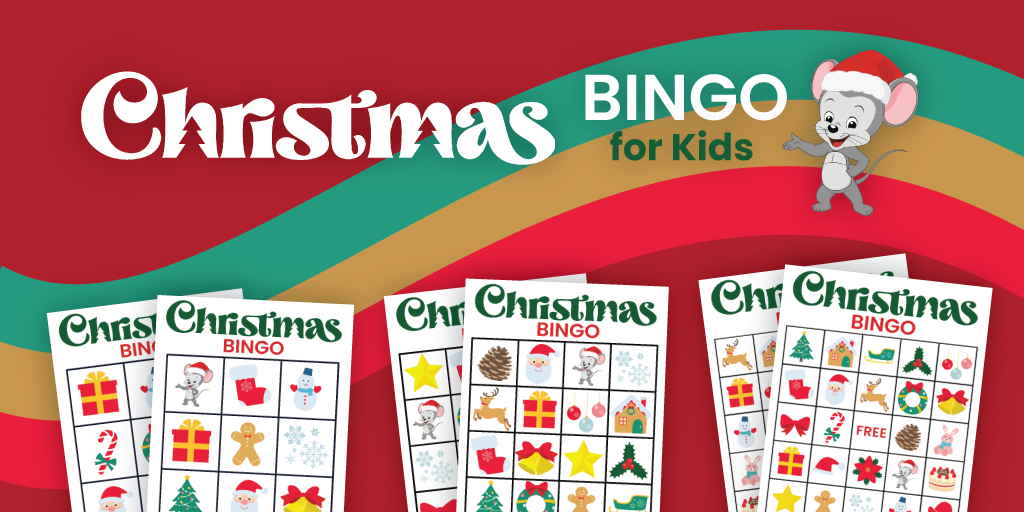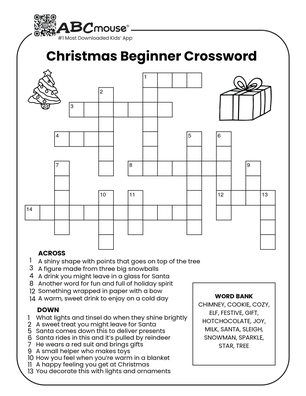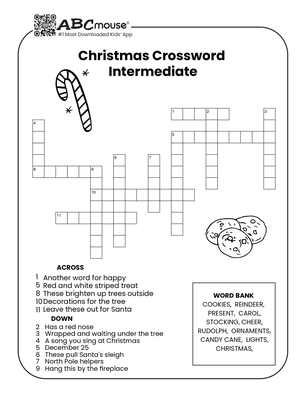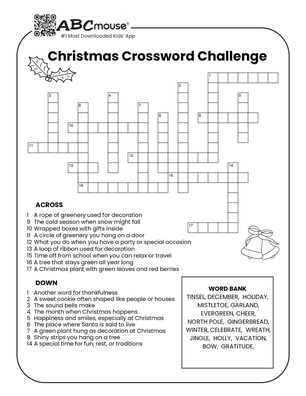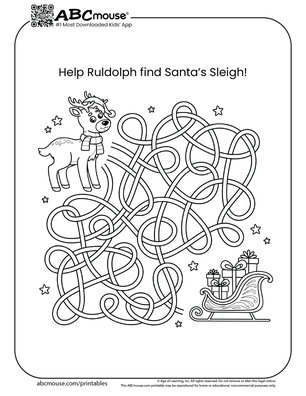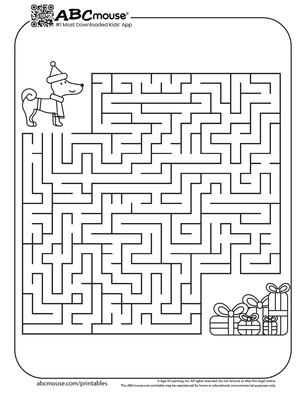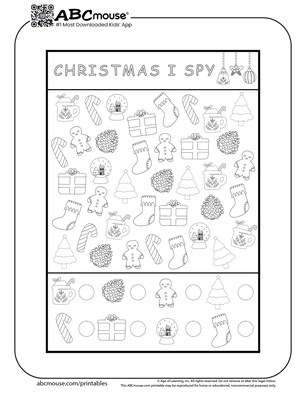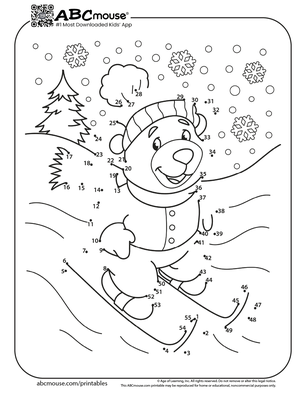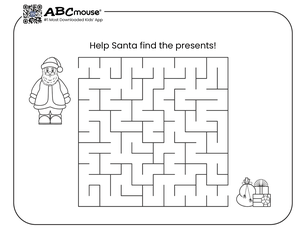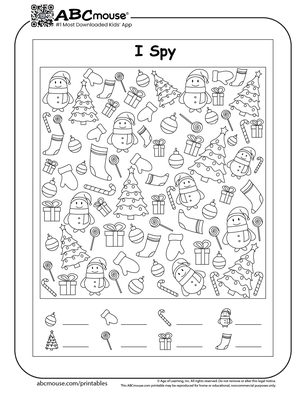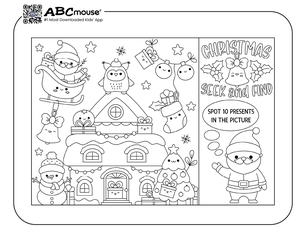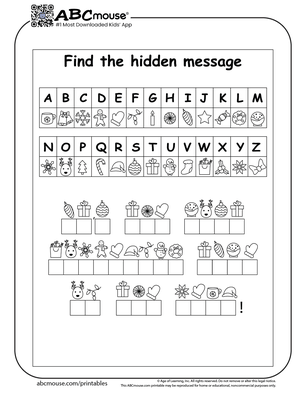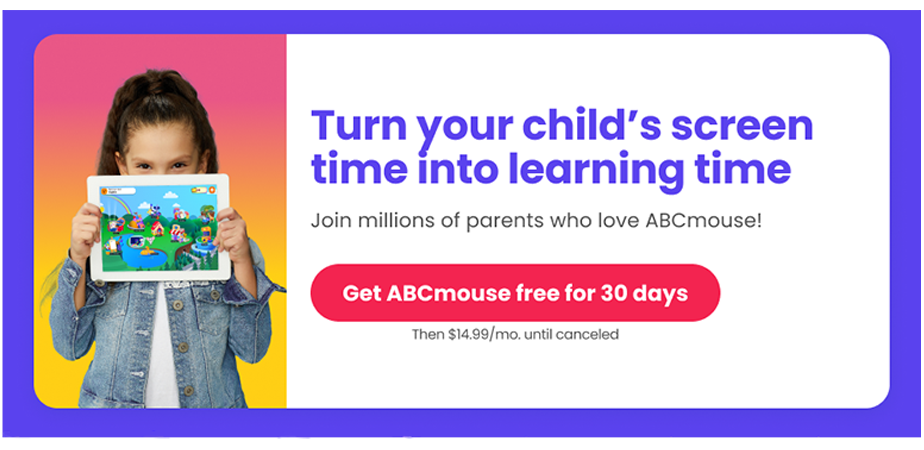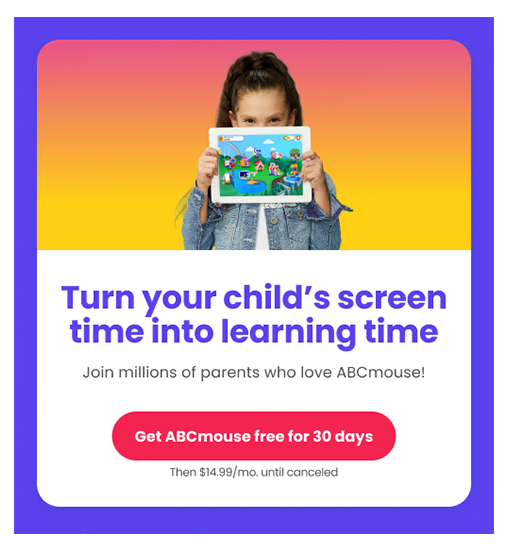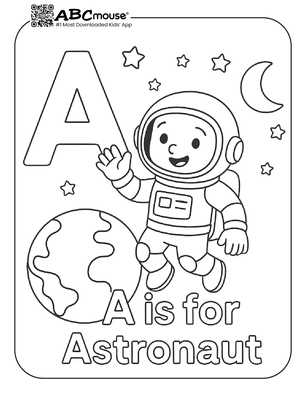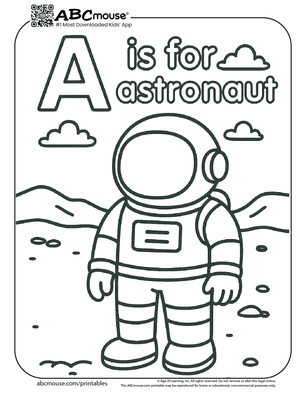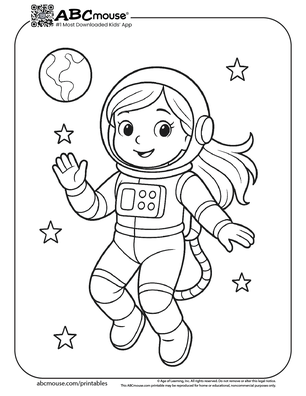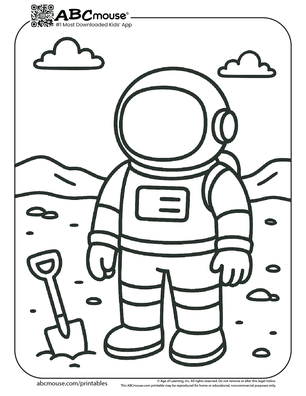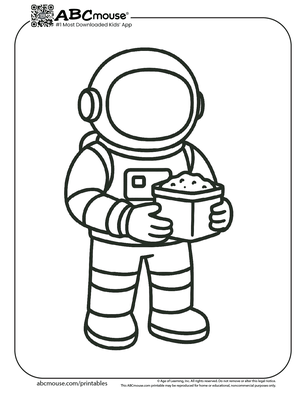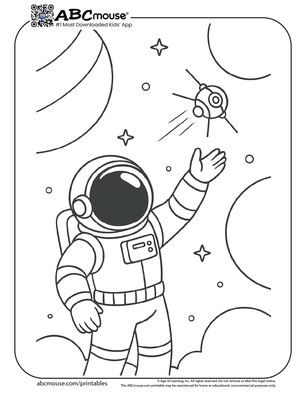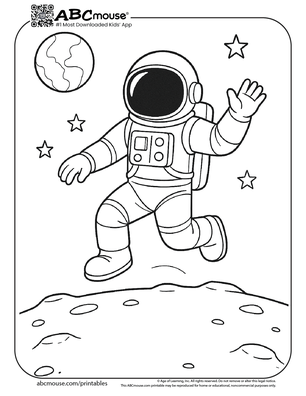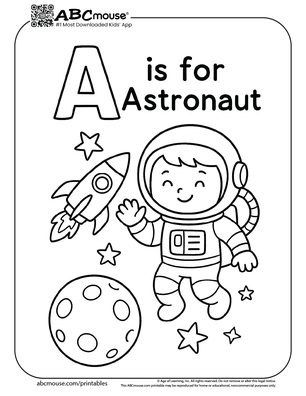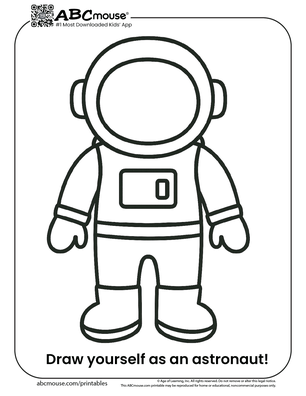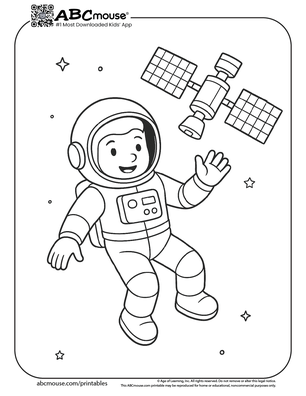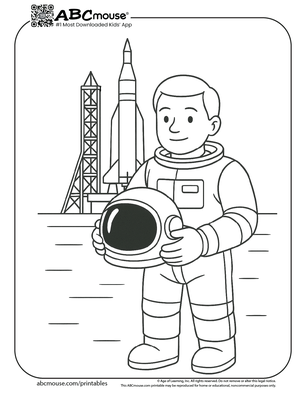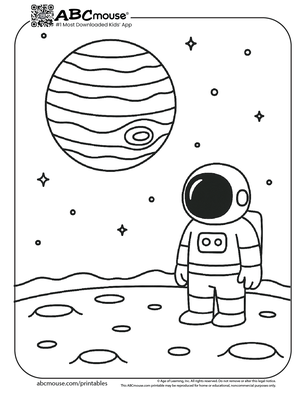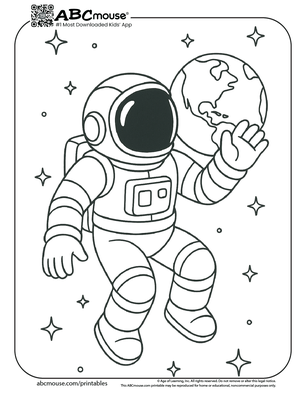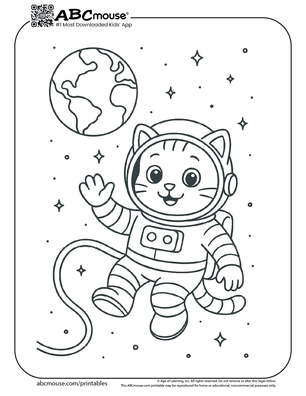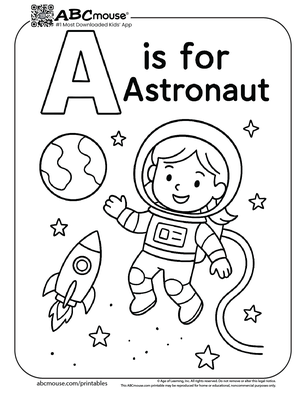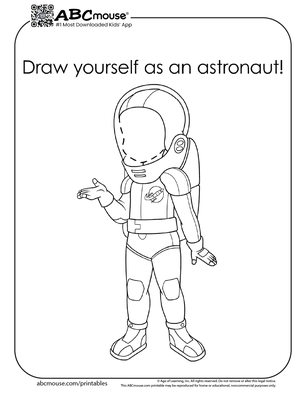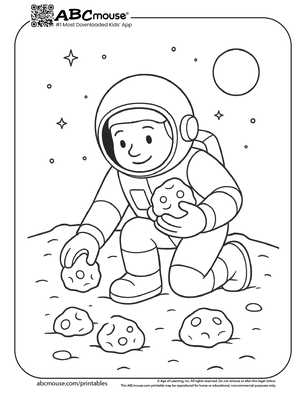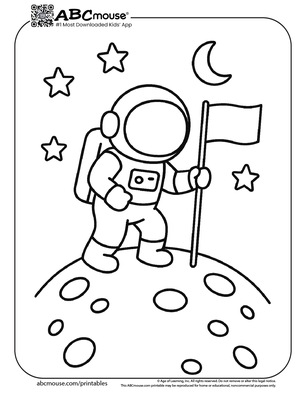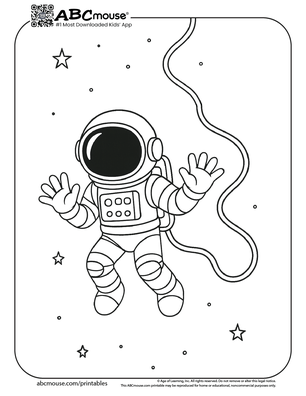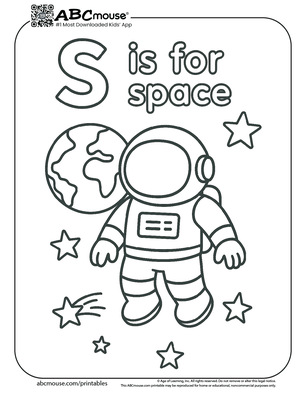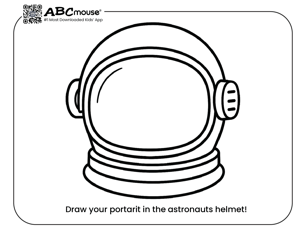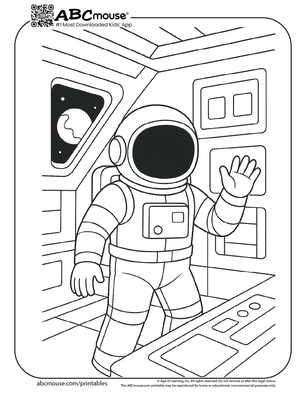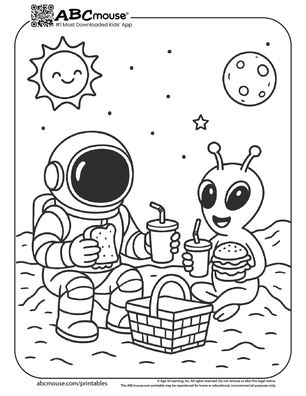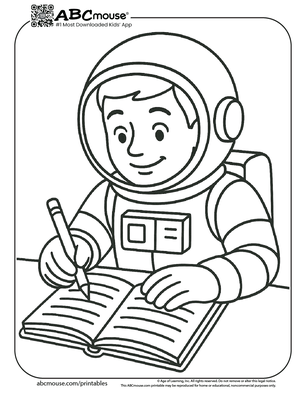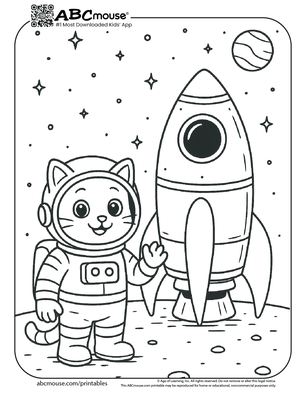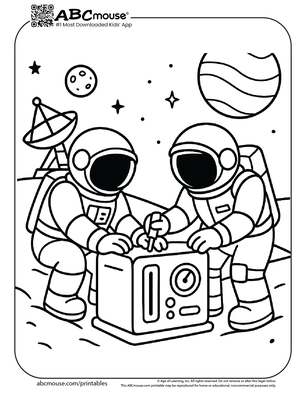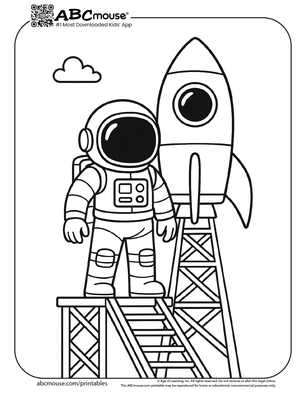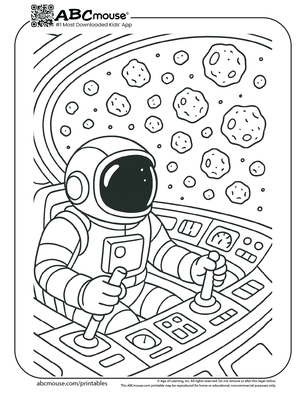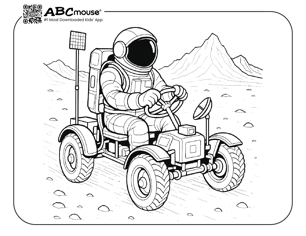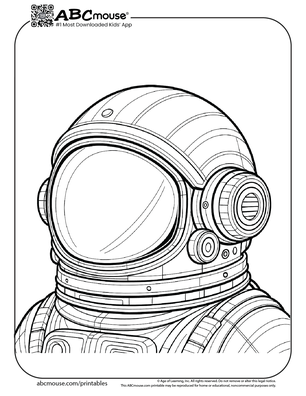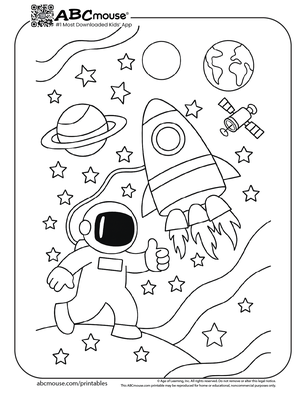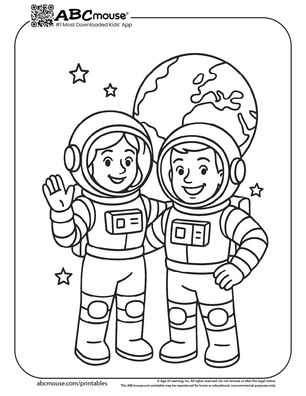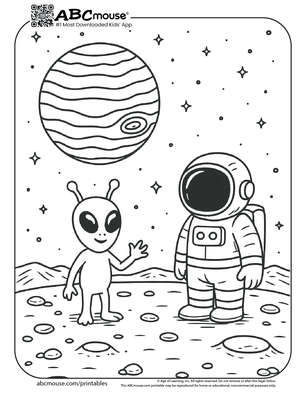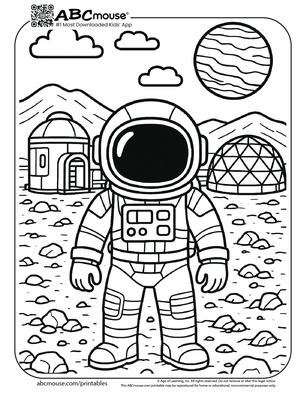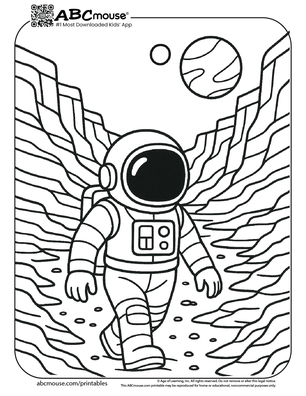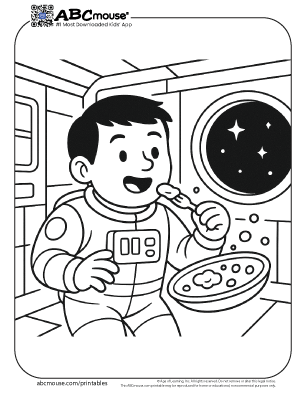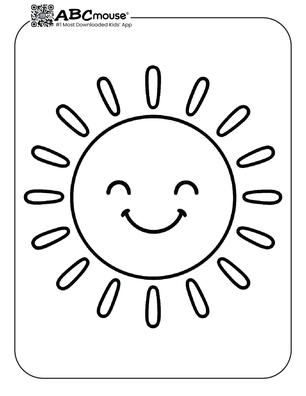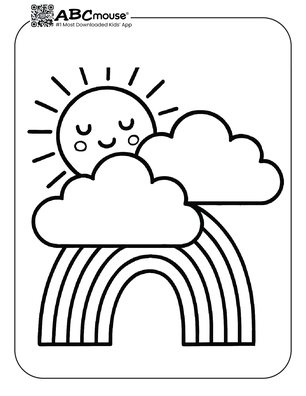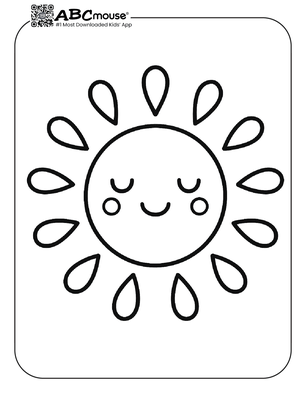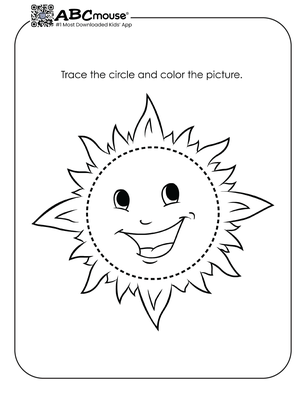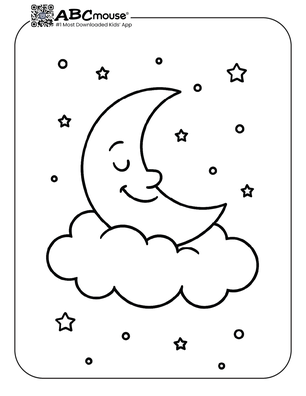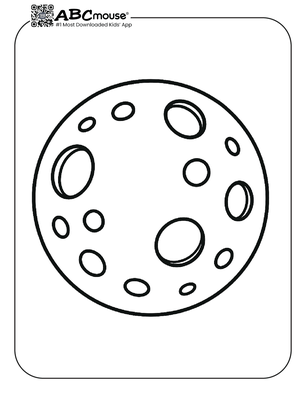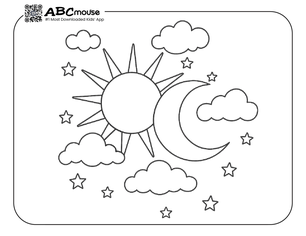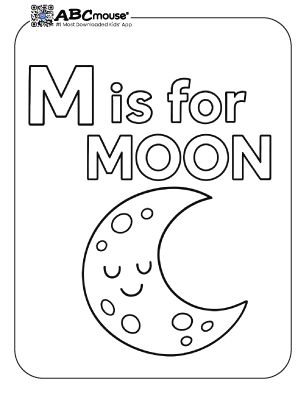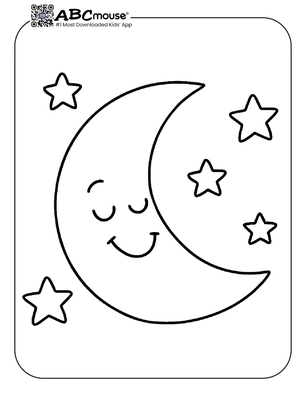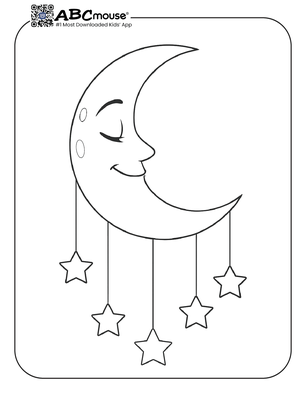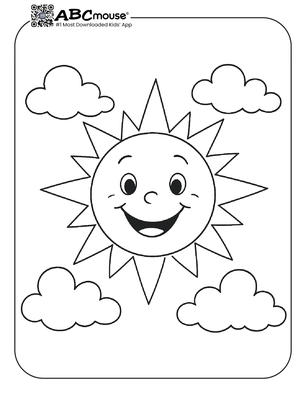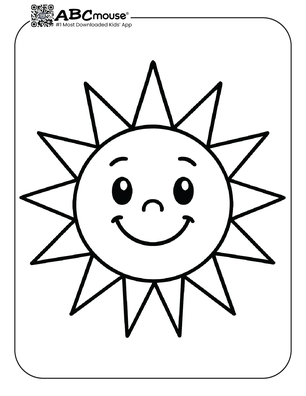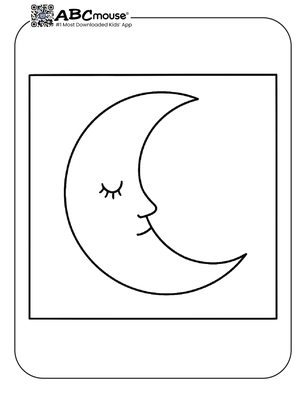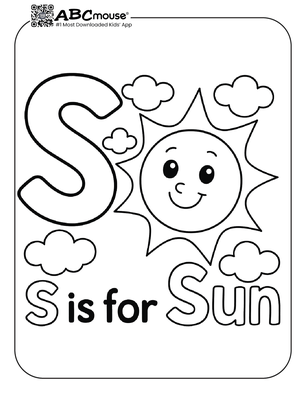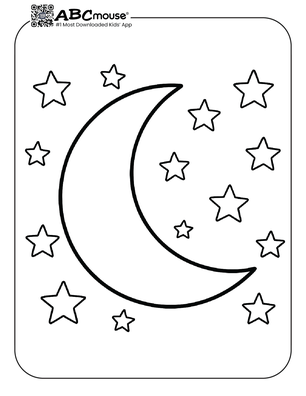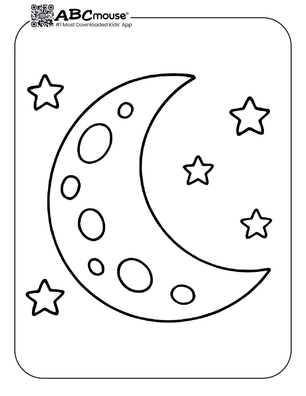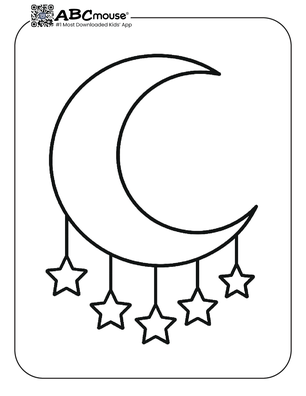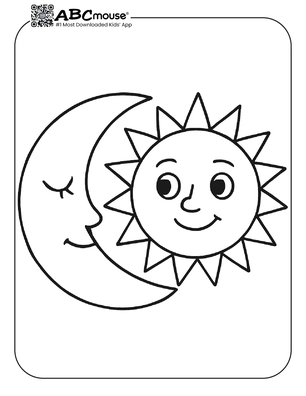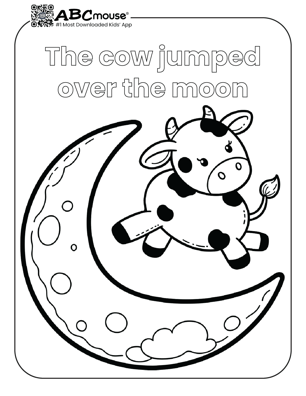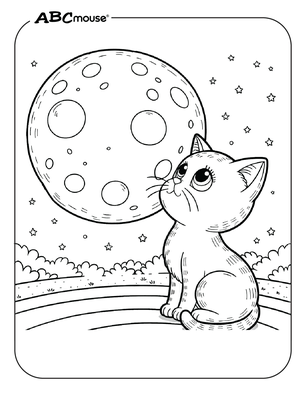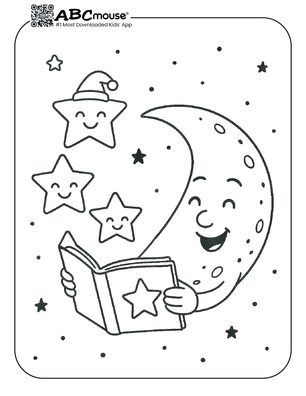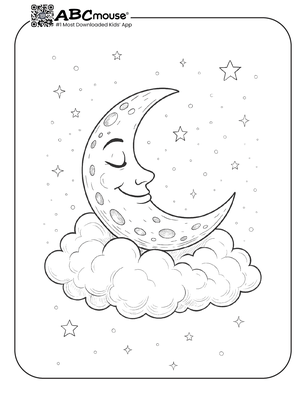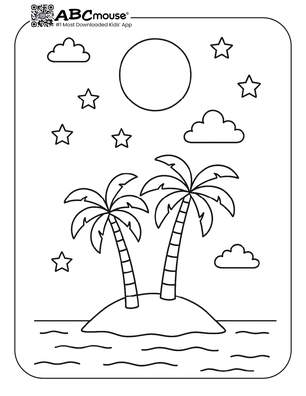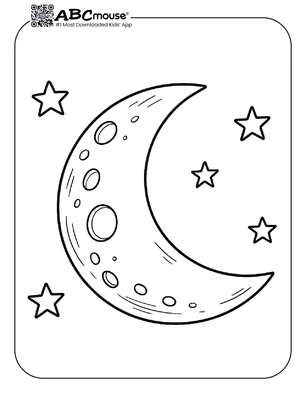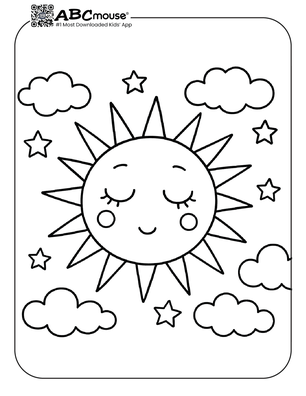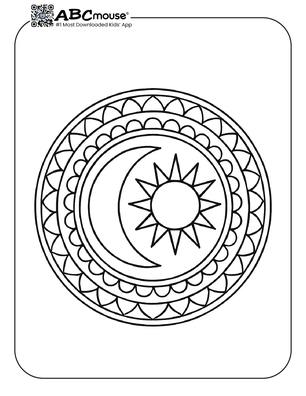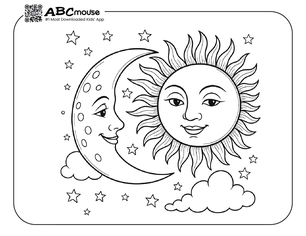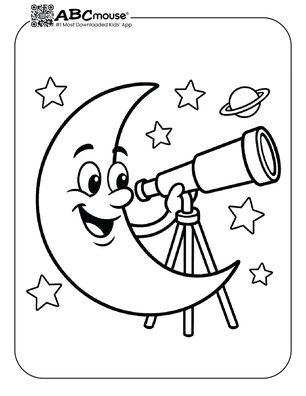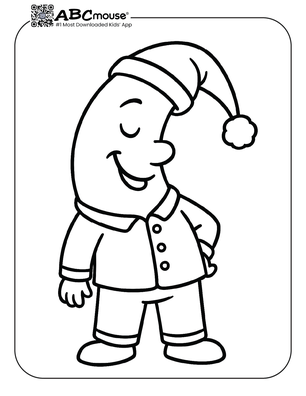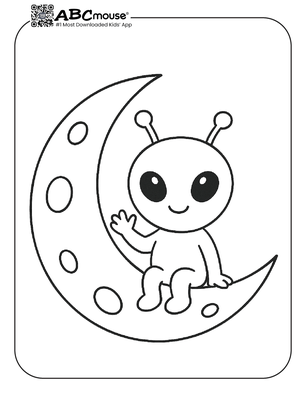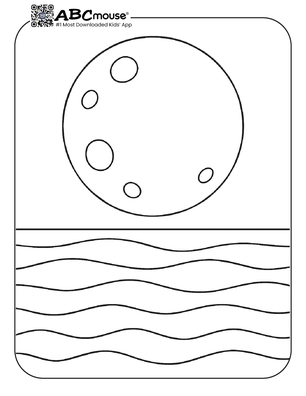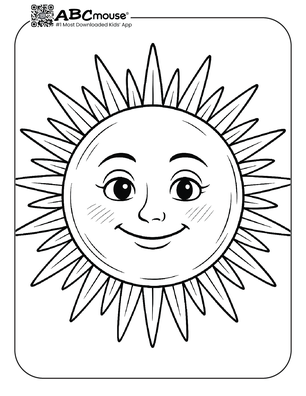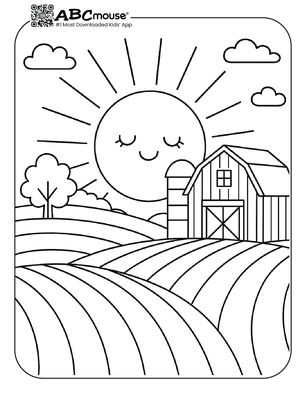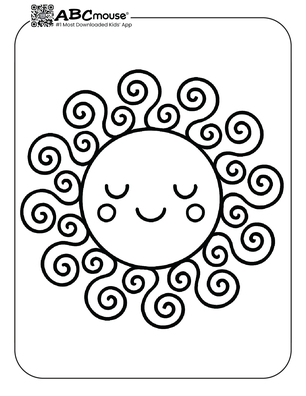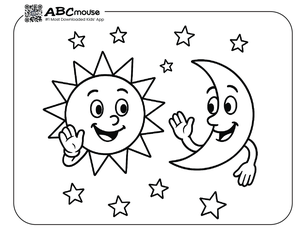Celebrating Kids Activities Blog: A Trusted Hub for Playful Learning
Early learning should be as joyful as it is impactful, which is why ABCmouse is thrilled to highlight Kids Activities Blog as a trusted resource for families and educators.

With its blend of creativity, information, and parent-friendly content, Kids Activities Blog makes learning accessible, engaging, and fun for children everywhere.
Why We Love Kids Activities Blog
For over 14 years, Kids Activities Blog has been a go-to destination for hands-on, educational play. Whether you’re looking for simple crafts, exciting science experiments, or engaging literacy activities, this blog delivers with enthusiasm.
Its vast collection of activities inspires young learners and their families to learn and create together and independently.
What Makes Kids Activities Blog Stand Out
Kids Activities Blog excels in several key areas that align with ABCmouse’s mission of fostering joyful and impactful early learning:
1. A Wide Variety of Activities
Kids Activities Blog offers an impressive range of activities that cater to different interests and learning goals. Some of the standout categories include:
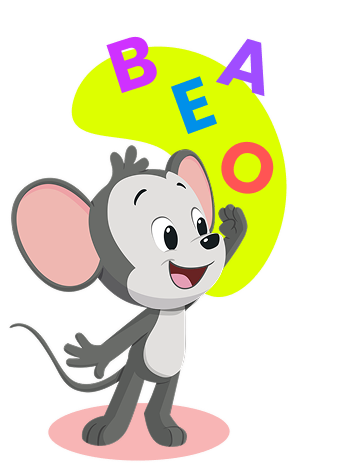
- STEM Activities: From simple science experiments like making a volcano to beginner coding games and engineering challenges, the blog encourages curiosity and critical thinking.
- Seasonal Crafts: Holiday-themed crafts and activities for every season keep families engaged year-round.
- Literacy and Reading: Alphabet games, language development activities, and storytelling prompts help build essential reading skills in a fun and interactive way.
- Sensory Play: Activities involving textures, smells, and hands-on exploration are great for younger learners.
- Outdoor Play Ideas: Nature scavenger hunts, gardening tips, and physical games encourage children to explore and learn outside.
2. Age-Specific Content
The blog caters to a wide range of age groups, making it a versatile resource for families:
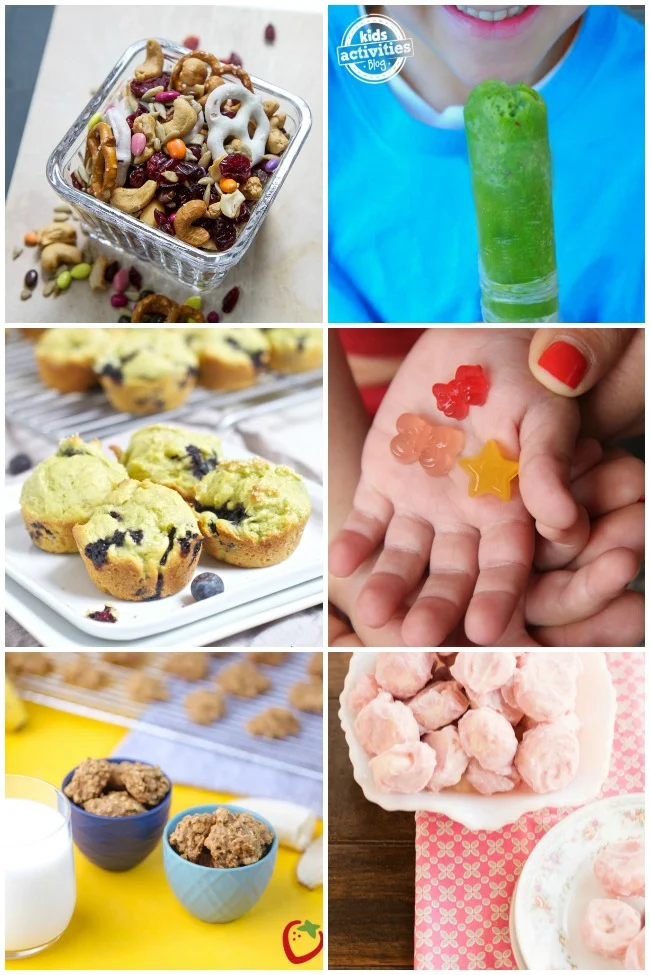
- Toddlers: Simple sensory activities and beginner crafts designed for little hands.
- Preschoolers: Engaging activities that focus on early literacy, numeracy, and motor skills.
- Early Elementary: More advanced projects, including science experiments, creative writing prompts, and problem-solving games.
By tailoring its content to different developmental stages, Kids Activities Blog ensures that every young child can find activities suited to their age and abilities.
3. Parent and Educator Resources
Beyond activities, Kids Activities Blog provides a wealth of resources to support learning at home or in the classroom:
- Printable worksheets, templates, and guides for parents and teachers.
- Indoor and outdoor activities designed for play-based learning.
- Tips and tricks for managing time, organizing activities, and fostering a love of learning.
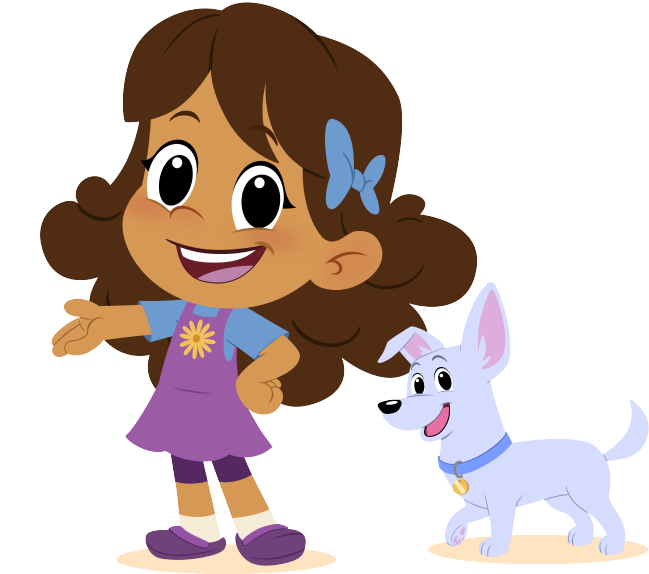
These tools help make it easier for families and educators to create meaningful learning experiences.
4. Community Engagement
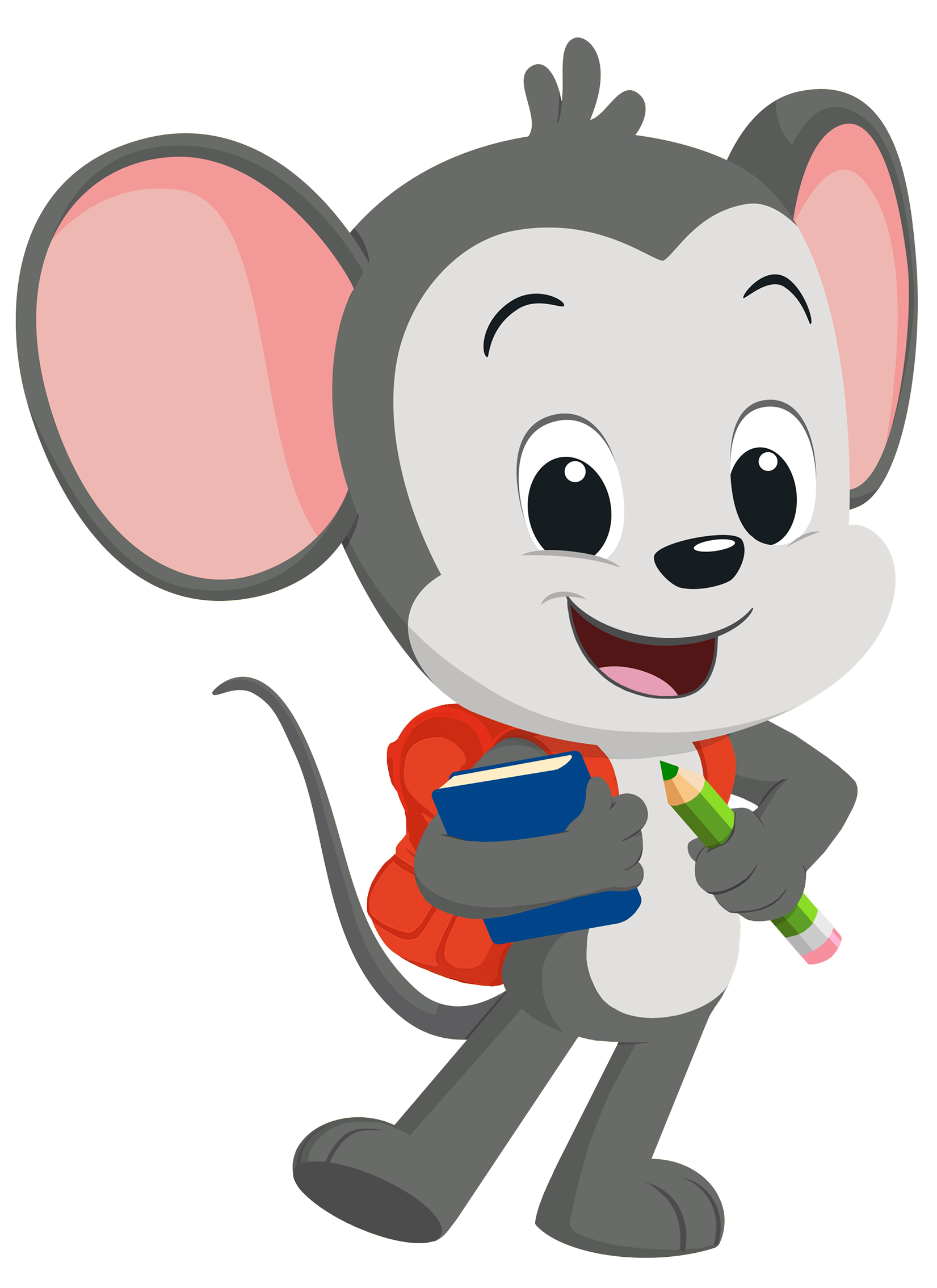
Kids Activities Blog has cultivated a thriving community of parents, teachers, and caregivers, as well as a strong social media presence that keeps families inspired with fresh ideas. Parents can engage with the blog on their website and other platforms such as Instagram and YouTube.
5. Trust and User Experience
Visitors to Kids Activities Blog will find a fun and engaging design that draws people in with its wealth of ideas and resources. Visitors will also appreciate the clear navigation and search function that make it easier to find activities. Ads that appear seem to be family-friendly and don’t obstruct the user experience.
Awards, Recognition, and Longevity
Kids Activities Blog’s 14 years of popularity, growth and excellence have earned it a reputation as a trusted provider of family-friendly educational content. Its impressive online presence and commitment to high-quality resources help families everywhere find new and creative ways to make learning fun.
Thank You, Kids Activities Blog!
We’re proud to celebrate Kids Activities Blog for its contributions to early education. Your dedication to providing reliable, family-friendly content has brightened the days of countless children and families. Thank you for inspiring a love of learning through play!
Discover more about Kids Activities Blog by visiting kidsactivitiesblog.com.
All selections are made independently by our editorial team, without influence from advertisers or partners. Links to third-party websites are not operated or controlled by Age of Learning and are subject to their own terms and conditions and privacy policies.
Celebrating Red Ted Art: Inspiring Creativity Through Crafts
At ABCmouse, we know that creativity is a cornerstone of early learning. That’s why we are thrilled to spotlight Red Ted Art, a delightful hub of fun, hands-on resource that brings crafting to life for kids at home and in the classroom.

With its easy-to-follow projects and clear educational value, Red Ted Art is a great choice for families and educators alike. We proudly recommend Red Ted Art and recognize it as an Outstanding Online Contributor to Early Childhood Learning.
Why We Love Red Ted Art
Red Ted Art features fun and simple crafts that help children develop essential skills like fine motor coordination, creativity, and self-expression.
From playful paper roll animals to festive seasonal art projects, the site offers endless ideas for families and educators that are accessible and easy to create. The colorful design and clear instructions make crafting feel approachable and fun for everyone involved.
What Makes Red Ted Art Stand Out
Red Ted Art excels in several key areas that align with ABCmouse’s mission to support joyful, meaningful early learning:
1. A Focus on Creative Development
At its core, Red Ted Art is all about nurturing creativity in children. The site features a wide variety of craft ideas that encourage hands-on learning and self-expression, including:

- Paper Crafts: Easy-to-make projects like origami animals, paper flowers, and greeting cards.
- Recycled Crafts: Eco-friendly ideas that repurpose household items into creative masterpieces.
- Seasonal Projects: Crafts for holidays and seasons, such as Christmas ornaments, Halloween decorations, and springtime art.
- Themed Crafts: Activities inspired by favorite characters, stories, or cultural events.
These projects encourage creativity and help kids build confidence as they see their ideas come to life.
2. Multiple Ways to Engage
Red Ted Art goes beyond its website to connect with families through various platforms:
- YouTube Channel: With nearly one million subscribers, the Red Ted Art YouTube channel offers step-by-step video tutorials that make crafting even more accessible.
- Craft Books: The brand has published several books filled with creative ideas, providing families with offline inspiration they can enjoy anytime.
- Social Media: With a strong presence on Facebook, Instagram and Pinterest, parents and educators can easily discover new projects.
This multi-platform approach makes Red Ted Art a versatile and far-reaching resource for creative learning.
3. Appeals to Multiple Ages
Red Ted Art caters to a wide range of ages, with crafts that grow along with children’s skills and are suited to various developmental stage:
- Toddlers: Simple, mess-free crafts that are perfect for little hands.
- Preschoolers: Engaging projects that introduce basic skills like cutting, gluing, and painting.
- School-Aged Children: More detailed crafts that challenge creativity and problem-solving.
- Teens and Adults: Some projects are more detailed and require skills like sewing, making them ideal for older children and even adults.

By offering age-appropriate activities, Red Ted Art helps to keep crafting fun and rewarding for children at various ages.
4. Parent and Educator-Friendly Design
The site is thoughtfully designed to make projects straightforward and enjoyable for adults as well:

- Clear, step-by-step instructions accompany each project.
- Printable templates and guides simplify preparation.
- The site is professional, well-organized and family-friendly, making it easy to find what you need and safe for children to explore.
Parents and educators can feel confident using Red Ted Art as a reliable resource for creative learning.
5. A Recognizable and Trusted Brand
Over the years, Red Ted Art has built a strong, recognizable brand that families trust. The brand’s presence across books, videos, and social media makes it more accessible and adds variety to how people can engage with the brand.
An Outstanding Example of Creative Learning
Red Ted Art inspires kids around the world to be curious, imaginative, and proud of what they create. With unique ideas and easy instructions, it turns everyday materials into opportunities for learning, connection, creativity, and fun. Red Ted Art makes creativity feel accessible and crafting feel truly doable.
Thank You, Red Ted Art !
We commend Red Ted Art for its commitment to nurturing creativity in young learners. Your engaging resources provide families and educators with simple ways to add creativity and learning to everyday moments. Thank you for being a trusted partner in early learning!
Discover more about Red Ted Art by visiting redtedart.com.
All selections are made independently by our editorial team, without influence from advertisers or partners. Links to third-party websites are not operated or controlled by Age of Learning and are subject to their own terms and conditions and privacy policies.
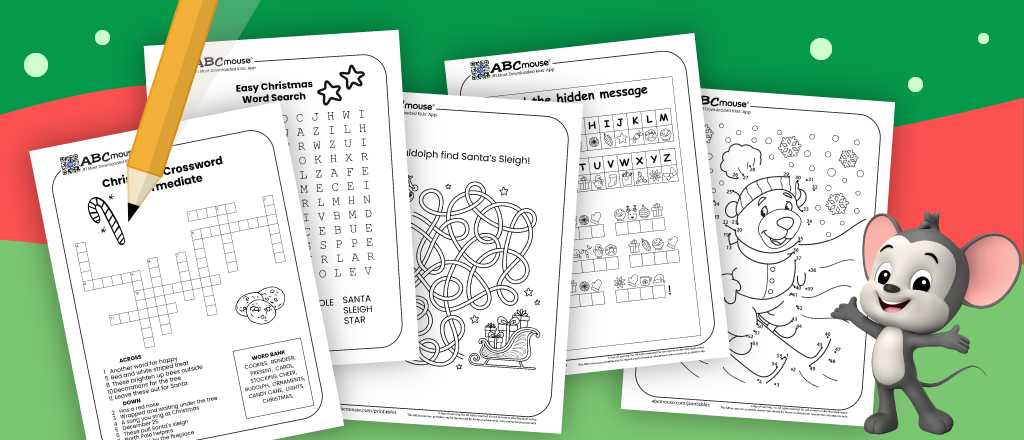
25+ Christmas Word Searches, Word Scrambles, Crossword Puzzles, and More
Share
Perfect for classrooms, at-home fun, or even holiday travel, our collection of free printable Christmas activities bring fun, festivity, and learning to kids ages 2–8! From word searches and word scrambles to crossword puzzles and I Spy sheets, these printables provide a variety of activities–all you have to do is download and print them!
Tp help young learners who may get stumped, the Christmas word searches and word scrambles come with answer keys and the Christmas crossword puzzles include word banks.
Fun Christmas Word Searches for Kids
Our Christmas word searches with answer keys are great for vocabulary and spelling practice and are designed for kids of various ages and skill levels. Pick from beginner puzzles with simple holiday words or intermediate and challenge puzzles for older kids. Younger children may need help reading the clues and hunting down the words.
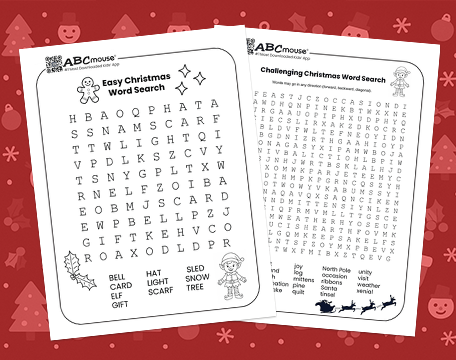


Christmas Word Scramble Printables
Word scrambles offer yet another way to work on vocabulary, phonics, and spelling while enjoying a holiday-themed challenge! You’ll find beginner, intermediate, and challenge levels to suit each child’s learning level, along with an answer key.

More Free Christmas Printables and Activities!
These activities are designed for kids and families to enjoy together, making it easy to bring both learning and laughter into your holiday season.
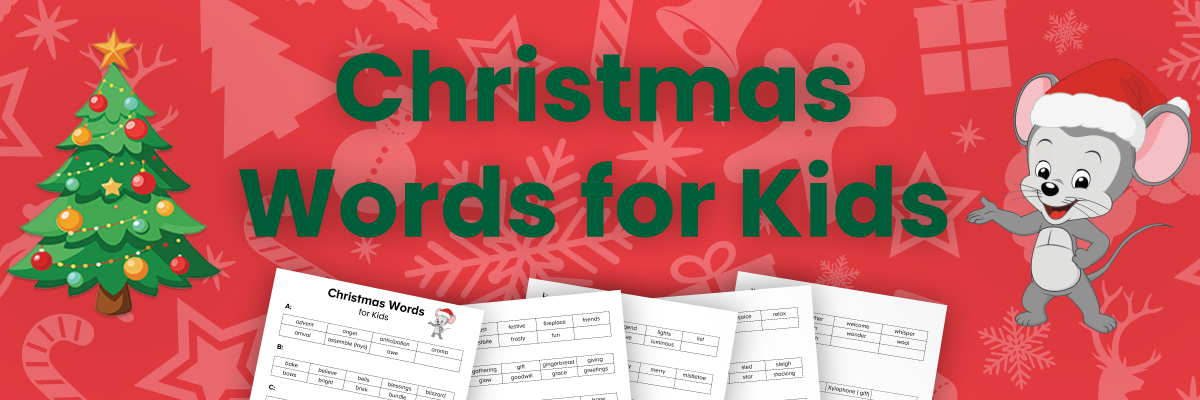
Looking for even more holiday fun? Be sure to check out our Family-Friendly Christmas Crafts and Activities collection! You’ll find a wide variety of festive printables and hands-on projects to enjoy, including:
✂️ Hands-on Christmas Crafts that turn everyday items into ornaments, decorations, or sweet holiday creations
🎄 Christmas Bingo Cards for family game nights or classroom fun
😂 Christmas Jokes for Kids that will keep everyone laughing
🖍️ Holiday Coloring Pages featuring Santa, reindeer, Hanukkah, Kwanzaa, and more
📜 Christmas Word Lists for learning and seasonal spelling practice

Christmas Crossword Puzzles
Designed for fluent readers (or with help from an adult), these holiday crossword puzzles with word banks encourage problem-solving and reinforce spelling skills with a fun Christmas twist.
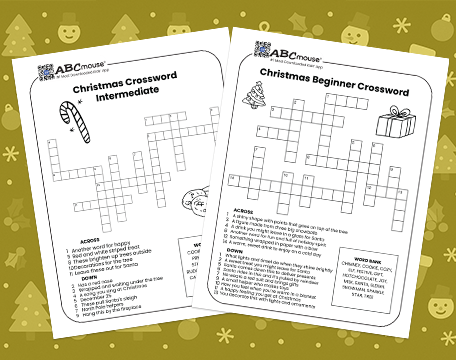

Christmas Mazes, Dot to Dots & I Spy
Whether they’re solving mazes, uncovering hidden messages, spotting pictures in I Spy sheets, or connecting the dots, kids will delight in the holiday fun found in each of these printables.
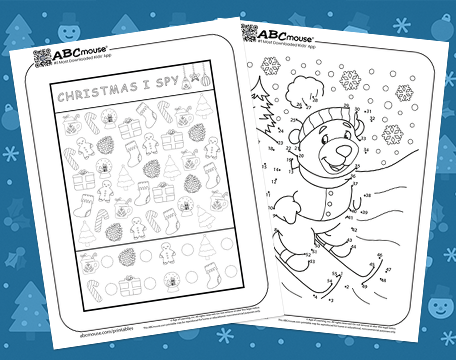
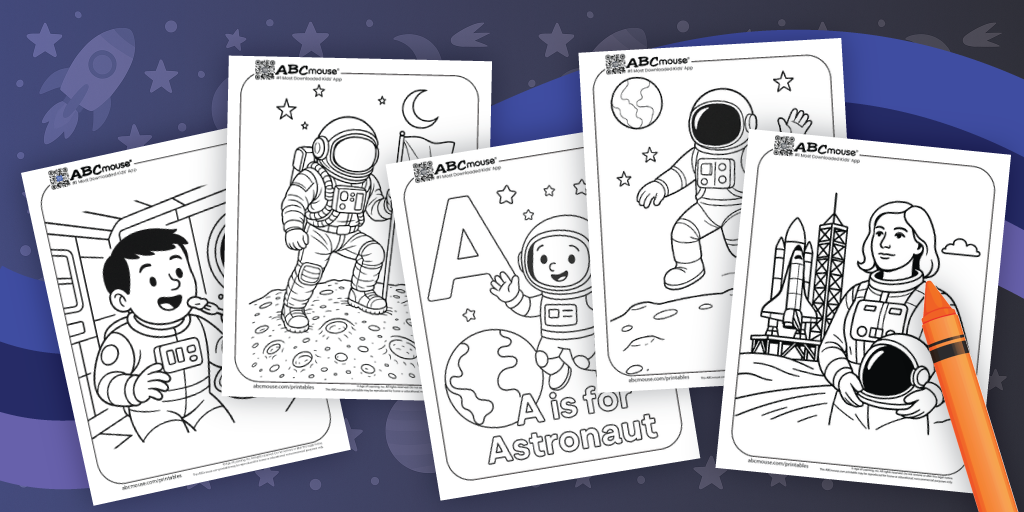
40+ Astronaut Coloring Pages for Kids (Free Printables)
Space travel has always fueled children’s imagination and curiosity. Capture that excitement with our free printable astronaut coloring pages, featuring brave astronauts, fun space adventures, and even a few animal astronauts. Print them out for parties, playdates, or as an engaging way to introduce kids to the wonders of space and exploration.
After finishing their coloring pages, kids can keep the adventure going by exploring space with ABCmouse in partnership with NASA. From planets and stars to astronauts and galaxies, they’ll discover interactive games, videos, books, and art activities that make learning about the universe exciting and fun!
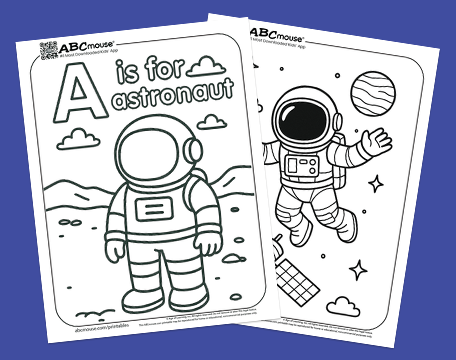
Overview of the Free Printable Astronaut Coloring Pages
From astronauts planting flags on the moon to floating in zero gravity, our collection of free PDFs brings the excitement of space right to your child’s coloring table! The simple astronaut outlines are perfect for toddlers and preschoolers, while older kids will enjoy the more detailed, realistic designs.
When the coloring is done, be sure to try our activity ideas below to keep the space fun going!
Simple Astronaut Coloring Pages for Toddlers, Preschoolers & Kindergarteners
More Detailed Astronaut Coloring Pages for 1st and 2nd Graders (and Up)
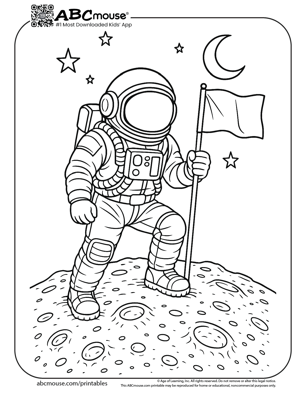
Detailed Astronaut with Flag on the Moon
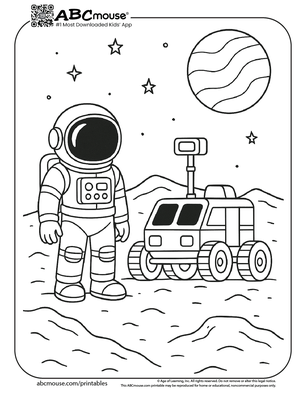
Astronaut with a Rover on a Planet
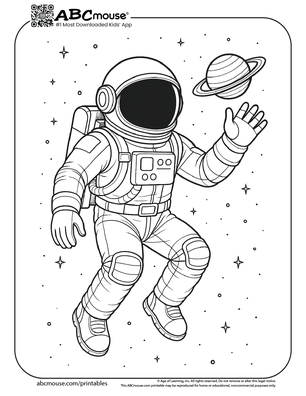
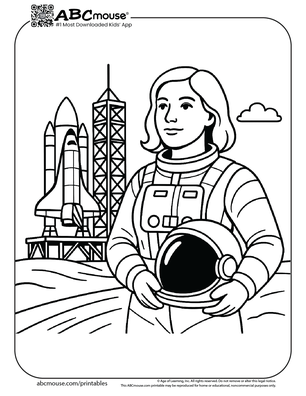
Women Astronaut Next to Launch Pad
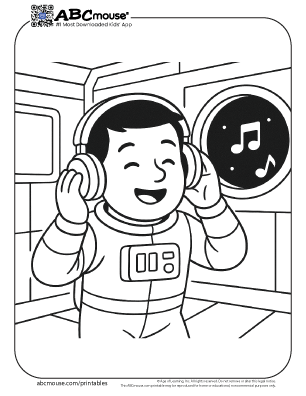
Astronaut Listening to Music in Space
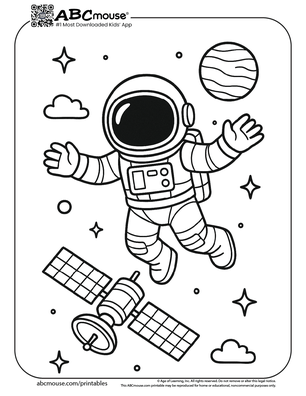
Astronaut Floating in Space Near a Satellite
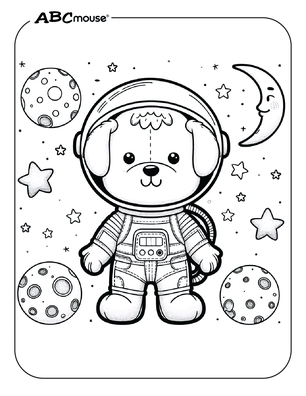
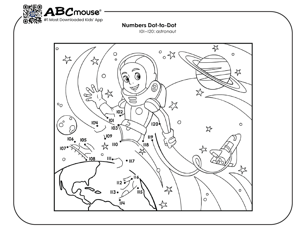
Fun Space Games and Activities to Pair with the Astronaut Coloring Pages
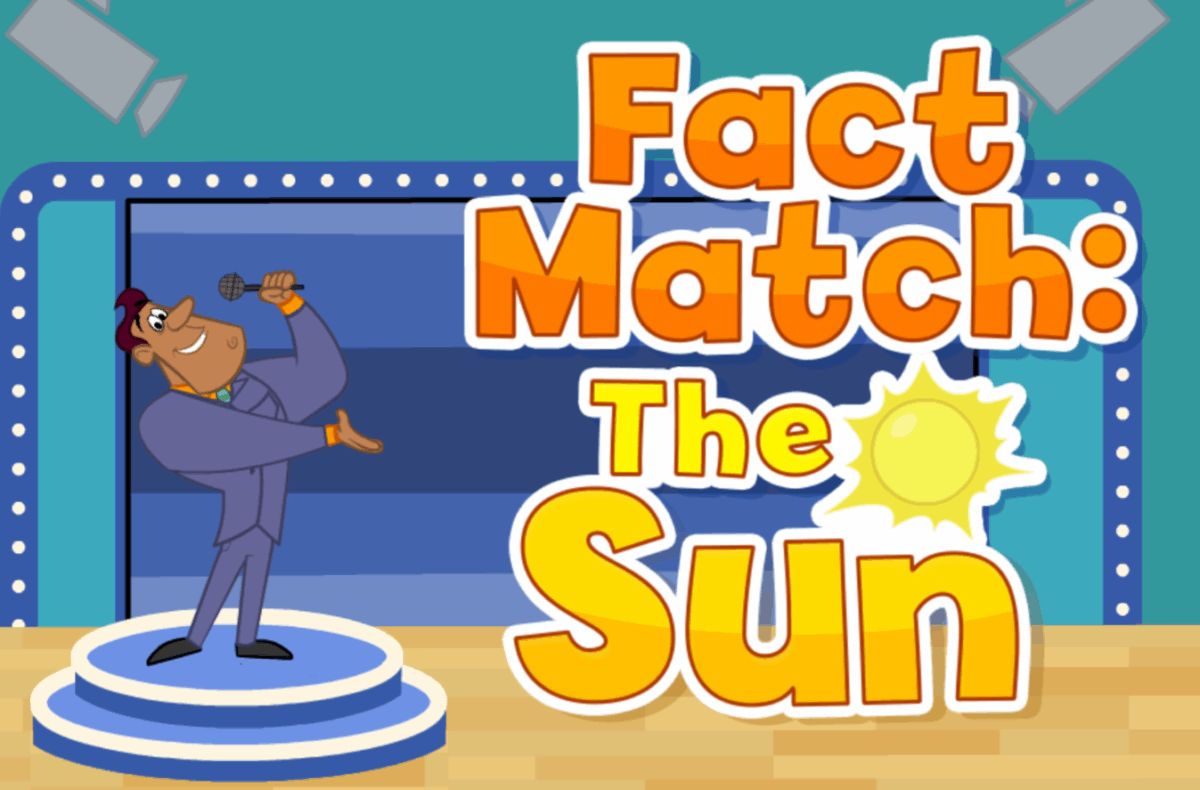
Fact Match: The Sun
In this fun quiz-style game, kids match facts about the Sun—like its size and role in the solar system—to the correct questions, building science knowledge and critical thinking skills along the way.
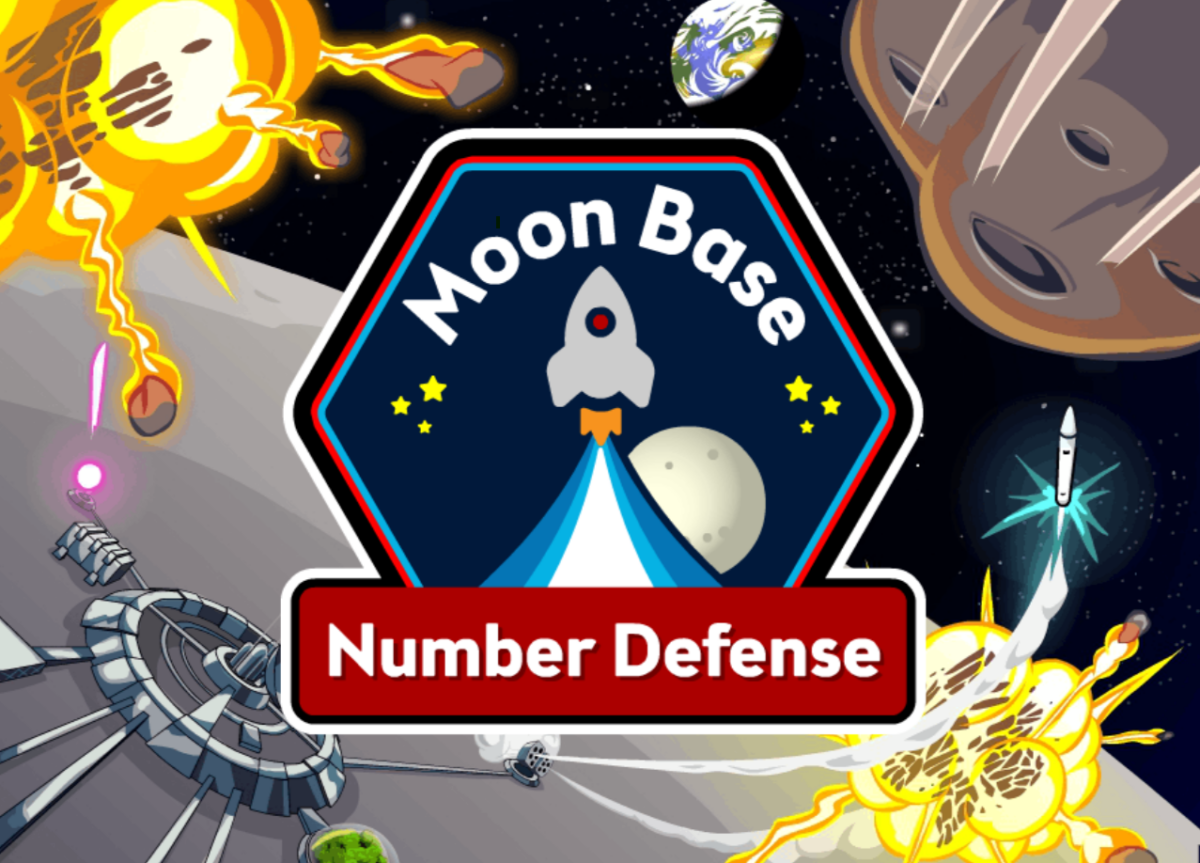
Moon Base Number Defense
Blast asteroids and protect the moon base while practicing the concept of greater than and less than with three-digit numbers!

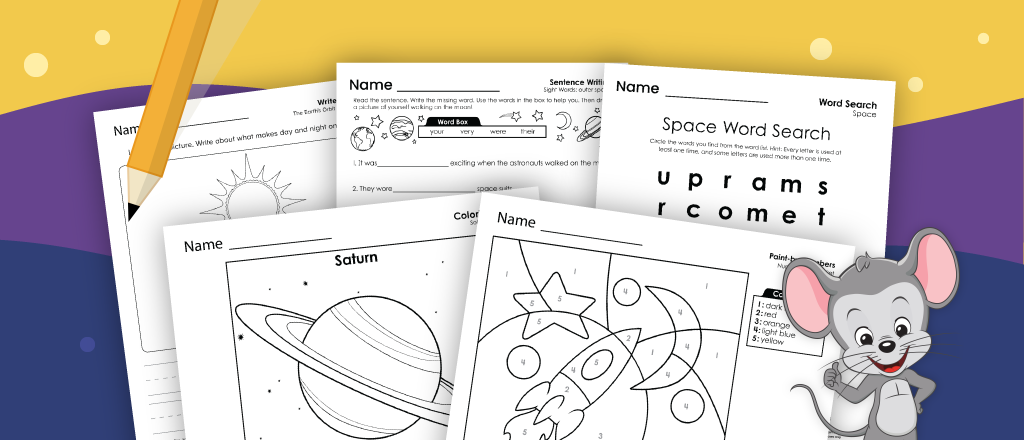
More Hands-on Activities to Try with Your Astronaut Coloring Pages
Recommended for: Kids of all ages
⭐ Astronaut Puppet Show
After coloring, tape astronauts to craft sticks or straws. Kids can use them as puppets to act out space missions, lunar landings, or funny alien encounters.
⭐ Create a Mobile
Cut out astronauts, rockets, and planets from the coloring pages. Use a hole punch to punch a hole in them. Tie a string through the hole, then attach the string to a hanger to create a space-themed mobile!
⭐ Astronaut Puzzle
Have your child select a few astronaut coloring pages to turn into puzzles (this will mean cutting them apart). Glue their chosen coloring pages to a pieces of card stock. Cut the coloring page apart, creating puzzle pieces as you go. Put all the pieces to each coloring sheet in their own bag, and invite your child to put them back together.
ABCmouse 2 Launches NASA Partnership to Deliver
Engaging Space Content to Young Learners
All New ABCmouse 2 Delivers NASA-Inspired Videos, Games, Books and Educational Activities
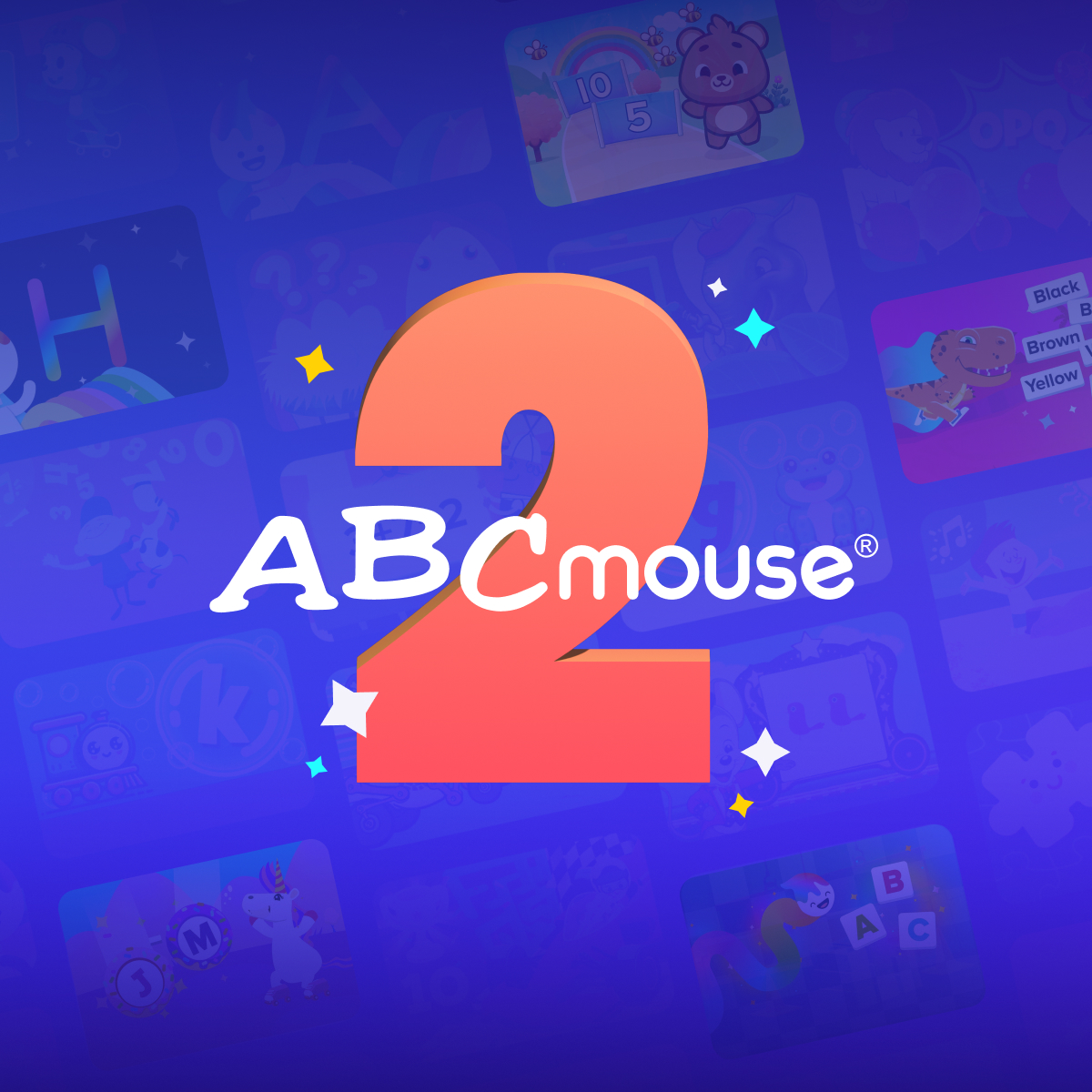
Los Angeles, September 30, 2025 – ABCmouse®, the award-winning early learning platform, today announced a partnership with NASA to develop content that brings the awe-inspiring world of space exploration into engaging educational experiences for young learners. Developed by leading education technology innovator Age of Learning Inc., this collaboration will invite children into the world of science.
This partnership will bring NASA’s exciting missions and experiments—including Artemis, the Webb Telescope, Chandra, and Dragonfly—to life for young learners through ABCmouse’s proven expertise in developing engaging, age-appropriate curriculum. Through imaginative, inquiry-driven play, the program will inspire 2 – 8-year-olds to think critically, explore fearlessly, and build foundational skills in science, literacy, and logic.
“Our mission is to help children build a lifelong love of learning, and this partnership with NASA does that through the wonder of space exploration,” said Alex Galvagni, CEO at Age of Learning. “Having worked at NASA previously, I know firsthand how space exploration captivates young minds, so I’m excited to bring that same inspiration to early learners. By combining NASA’s incredible missions with ABCmouse’s proven educational approach, we’re deepening engagement, igniting imagination, and creating experiences that show children the universe is theirs to explore.”
The NASA-inspired content will support children in making observations and discovering the wonders of the moon, planets, the sun, and exciting astronaut missions. Our beloved ABC Mouse character, alongside friends, will guide young learners through adventures that encourage investigation of new ideas in playful contexts rooted in real-world science.
The collaboration advances Age of Learning’s mission of helping children everywhere build a strong foundation for academic success and a lifelong love of learning. By integrating NASA’s authentic scientific content into ABCmouse’s comprehensive educational curriculum and activities, the partnership ensures that early learners develop both the wonder and the foundational skills necessary to become tomorrow’s STEM leaders.
A select number of NASA-inspired learning activities are available on ABCmouse 2 at no cost beginning September 30, 2025, with the full collection of content available to premium subscribers and additional experiences rolling out throughout 2026. Visit https://www.abcmouse.com/learn/partnerships/nasa/71024 for more information.
About ABCmouse
ABCmouse® is the leading and most comprehensive digital learning resource for children ages 2–8. ABCmouse 2 delivers the trusted curriculum families love that helps accelerate growth in reading and math through an entirely reimagined experience. Large-scale research studies show that ABCmouse accelerates learning and helps children make significant gains in early literacy and math skills.
About Age of Learning
Age of Learning® is the leading developer of engaging and effective Pre-K through 2nd grade learning resources that help children build a strong foundation for academic success and a lifelong love of learning. The company’s research-based curriculum, developed by education experts, includes the award-winning programs ABCmouse®, ABCmouse 2, Adventure Academy®, as well as the adaptive, personalized school solutions, My Math Academy®, My Reading Academy®, and My Reading Academy Español®. Having served over 50 million children worldwide, Age of Learning is a global leader in efforts to advance equity, access, and opportunity for all children. To learn more about Age of Learning, visit AgeofLearning.com.
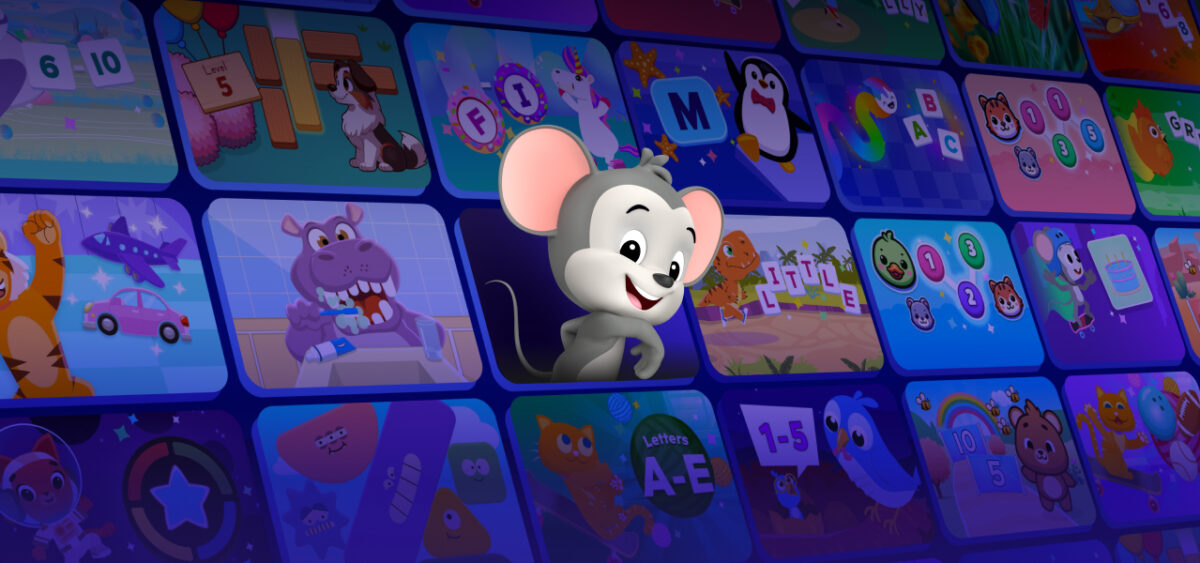
ABCmouse 2: Learning Reimagined for Today’s Kids
ABCmouse 2 isn’t just an update–it’s the next generation of learning for your child.
ABCmouse 2 is our newest and most engaging experience, thoughtfully transformed to support the way children learn and how families engage with educational programs at home. While ABCmouse introduced millions of families to digital learning, ABCmouse 2 builds on that trusted foundation with major upgrades in visuals, content, and technology.
ABCmouse 2: Basic (Free) and Premium

ABCmouse 2 Basic
- Free
- Limited access to a curated selection of up to 10 learning activities per day
- Only one child profile
ABCmouse 2 Premium
- $14.99/month or $45/year
- Unlimited access to 13,000+ learning activities
- Personalized Learning Paths for up to three children
New Features of ABCmouse 2
ABCmouse 2 keeps the best of what families already know and love while delivering a significantly more advanced learning experience.
At the heart of every child’s experience is our research-validated, evidence-based curriculum created by early education experts. Now enhanced with richer visuals, greater interactivity, and expanded skill-building, it makes learning even more engaging and effective for kids.
A Comprehensive Curriculum and Beyond
- Award-winning curriculum in reading, math, science, social studies, and art
- Integrates experiences focused on critical thinking, pattern recognition, and strategic reasoning–skills that aim to better prepare kids for today’s fast-changing world.
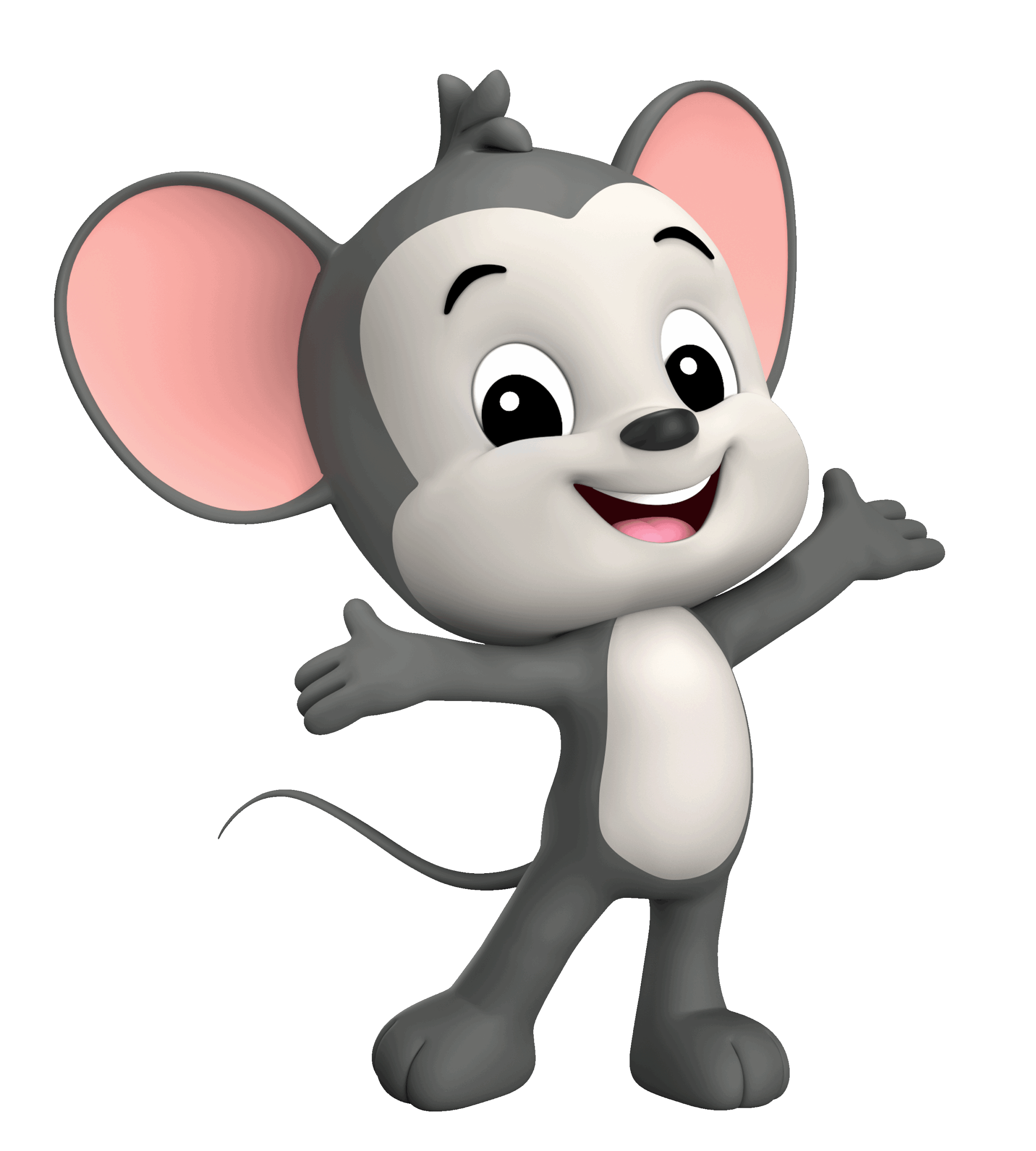
Research shows that ABCmouse 2 accelerates academic growth by up to 2x!*
*Randomized control trial conducted by Age of Learning. PreK children used ABCmouse for at least 2 days/week and for at least 1 hour per week. Go to www.aofl.com/research for more information.
New Games and Experiences That Feel Like Play
- Interactive games that boost key literacy and math skills
- Engaging, open-ended games like Bot Beats, My Hamster, and Monster Stacking, which promote STEM concepts like sequencing, problem-solving, and design thinking
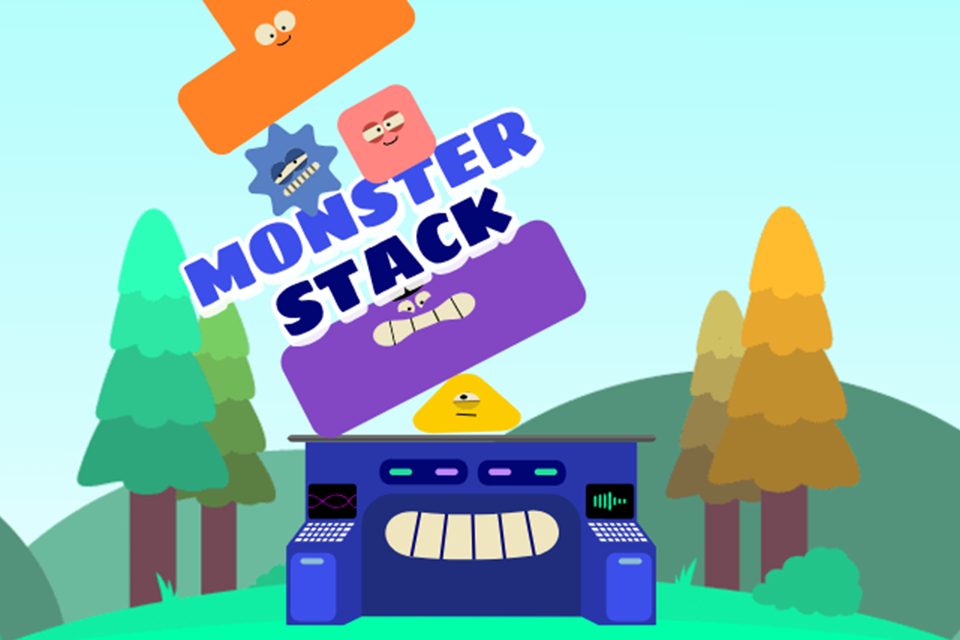
Impressive Visuals & Smoother Tech
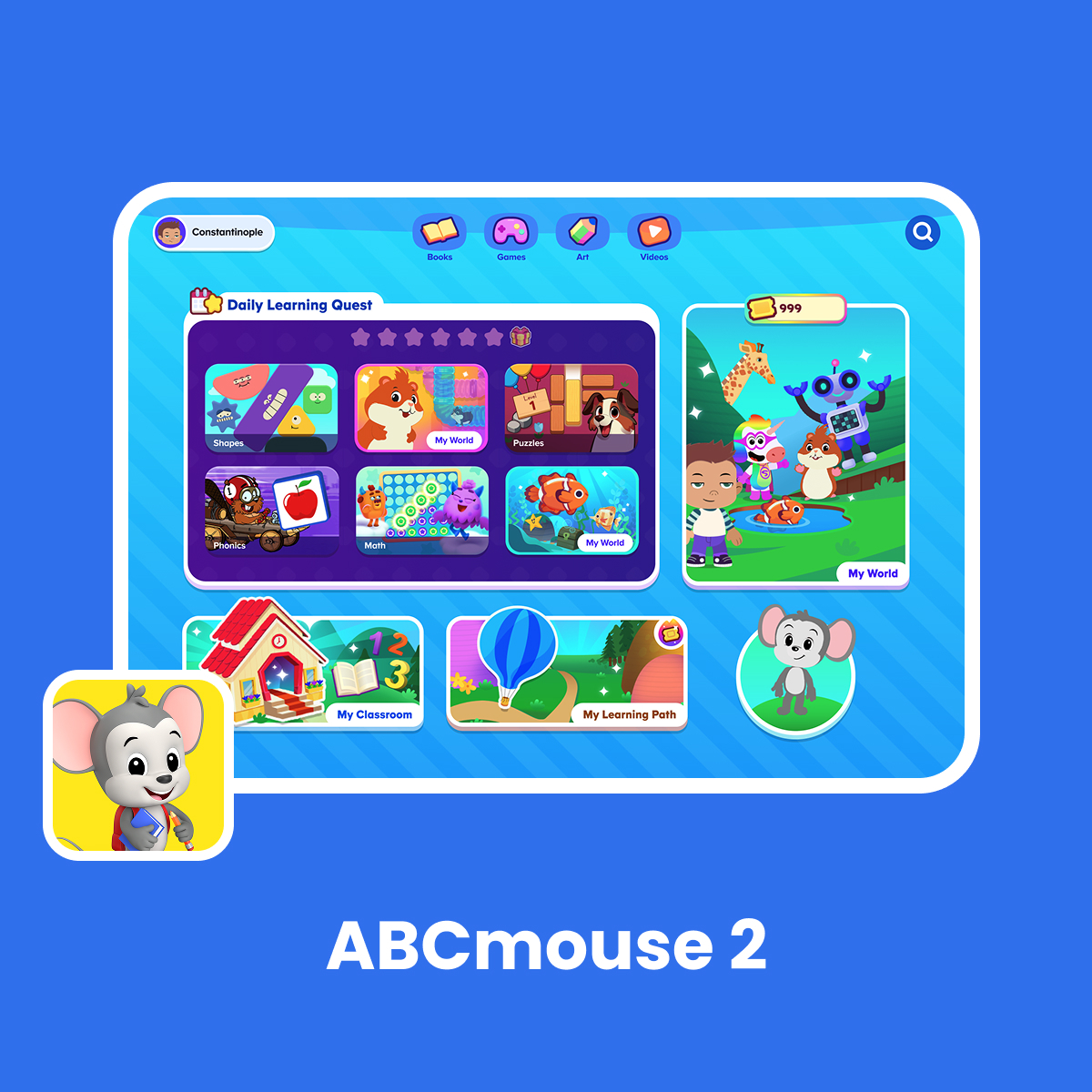
- ABCmouse 2 features beautiful new animations, interactive experiences, and faster load times across all devices.
- Kids can jump seamlessly from a tablet or phone to a computer without missing a beat.
Enhanced Personalization and Customization
The Premium version of ABCmouse 2 allows for:
- Grade-level customization for each child’s Learning Path
- Personalized experiences based on age level
- Profiles for up to three children




Safe and Ad-Free (As Always)
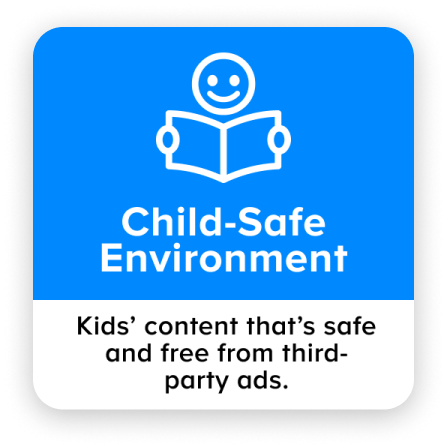
- ABCmouse 2 is a completely safe, ad-free environment.
- Children can stay focused on learning.
- Parents and educators don’t have to worry about kids being exposed to unsuitable material while playing in the app.
Side-by-Side Comparison: ABCmouse vs. ABCmouse 2
To help families understand the key differences between ABCmouse, ABCmouse 2 Basic (Free), and ABCmouse 2 Premium, the table below provides a side-by-side comparison of what each version offers.
| Feature | ABCmouse | ABCmouse 2 Basic (Free) | ABCmouse 2 Premium |
| Learning Activities | 10,000+ (static) | 10/day | 13,000+ (grows monthly) |
| Personalized Learning Paths | Unlimited | Single | Unlimited, customizable by grade |
| STEM + Coding | ❌ | ✅ | ✅ |
| Enhanced Visuals & Technology | ❌ | ✅ | ✅ |
| Executive Function & Critical Thinking | ❌ | ✅ | ✅ |
| Game-based Life Skills | ❌ | ✅ | ✅ |
| Safari, Aquarium, Pet Town | ❌ | ✅ | ✅ |
| Profiles | 1 | 1 | Up to 3 |
| Offline Mode | ✅ | Coming soon | Coming soon |
| Cost | Paid | Free | $14.99/mo or $45/year |
ABCmouse 2 FAQs
What happens if I already have an ABCmouse subscription?
If you’re a current ABCmouse subscriber, you can get ABCmouse 2 Premium for free. This is not a trial or a limited version of the app. It’s free for you as long as you keep your ABCmouse account active. If you have an active ABCmouse account and log into ABCmouse 2 with your ABCmouse credentials, the following information will be brought into the new app for you:
- Parent email and password
- Child profiles
- Tickets
Is ABCmouse 2 free?
ABCmouse 2 does offer a free version called ABCmouse 2 Basic. It offers free daily access to a curated selection of learning activities. Children can play up to 10 activities per day. It also includes trusted curriculum in reading and math, ad-free content, and features like:
- Parent Portal
- Customizable avatar
- Tickets and rewards
- STEM learning games
- Coding fundamentals
- Life skills activities like healthy routines and critical thinking games.
How much is ABCmouse 2?
ABCmouse 2 Basic is free and offers access to a limited number of activities. If families want unlimited access to the full 13,000+ activity library, personalized Learning Paths for up to 3 children, offline mode, and replay features, they can upgrade to ABCmouse 2 Premium for:
- $14.99/month or
- $45/year (auto-renewing)
What will my child learn with ABCmouse 2?
ABCmouse 2 provides a standards-aligned curriculum that grows with your child from ages 2 to 8 and includes reading and writing, math, science, social studies, art, music, and logic, strategy and reasoning. The program also features lessons on life skills and problem solving and is expertly designed to support whole-child development.
Is there a parent portal in ABCmouse 2?
Yes, there is a parent portal in ABCmouse 2. Families still get access to progress tracking, recommendations, and usage insights to stay involved in their child’s learning.
Is ABCmouse 2 free of ads?
Yes, ABCmouse 2 is free from third-party ads, ensuring a worry-free digital learning space for kids.
Are there custom avatars in ABCmouse 2?
Yes, kids can still express themselves through personalized avatars, keeping the play element front and center.
Are there tickets and rewards in ABCmouse 2?
Yes, this favorite motivational feature is still here, helping kids feel recognized and excited about progress.
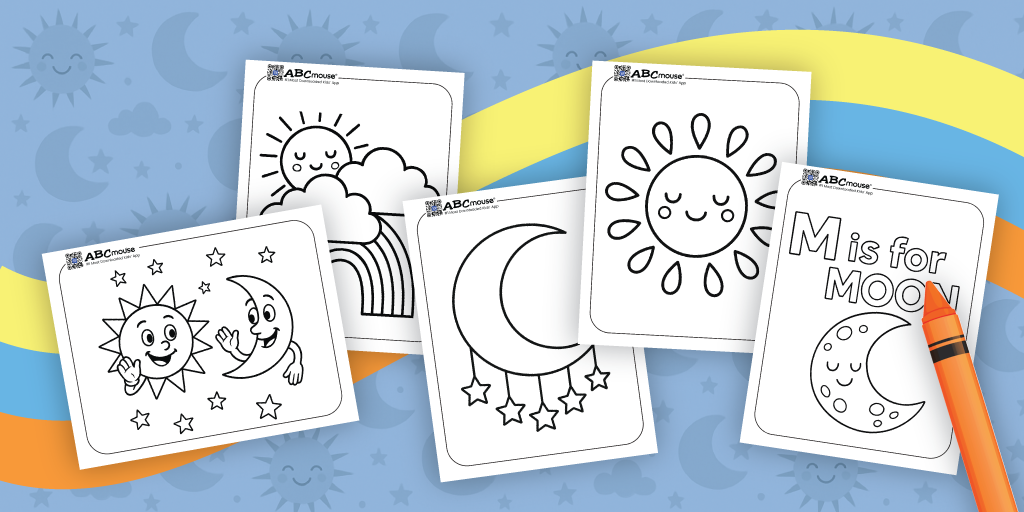
40+ Sun and Moon Coloring Pages for Kids (Free Printables)
The sun and moon are some of the most magical sights in the sky! These free coloring pages lean into that fascination, featuring smiling suns, dreamy crescent moons, and so much more. Print them out for parties, playdates, or as a simple way to explore day and night or beginning concepts about space.
To continue enjoying the magic of nature, try our 50 Outdoor Activities for Preschoolers.
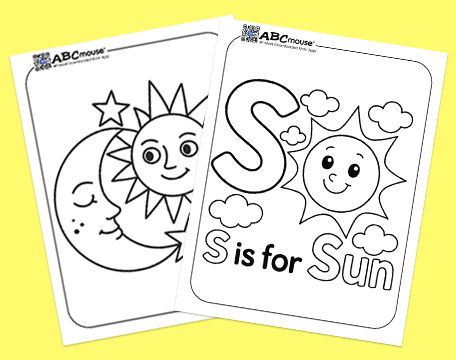
Overview of the Free Printable Sun and Moon Coloring Pages
From cheerful suns to peaceful moons, every coloring page in this collection brings the beauty of the sky to life! The simple sun and moon outlines are perfect for toddlers and preschoolers, while older kids can enjoy the more detailed designs in this set of free PDFs.
And when the coloring is done, don’t miss our playful activity ideas below to keep the sky-themed fun going!
Simple Sun and Moon Coloring Pages for Toddlers Preschoolers & Kindergarteners
More Detailed Sun and Moon Coloring Pages for 1st and 2nd Graders
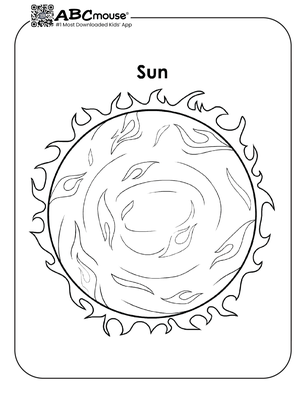
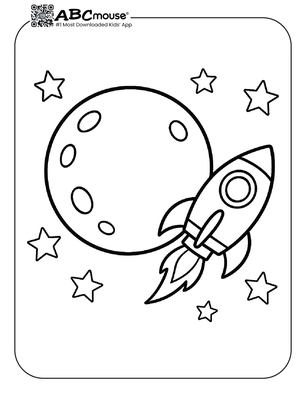
A Rocket Flying Past a Full Moon
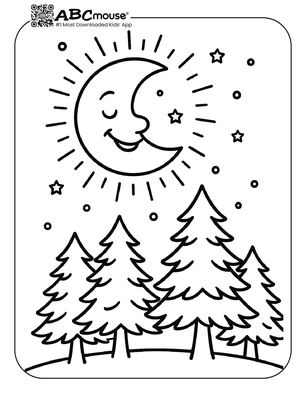
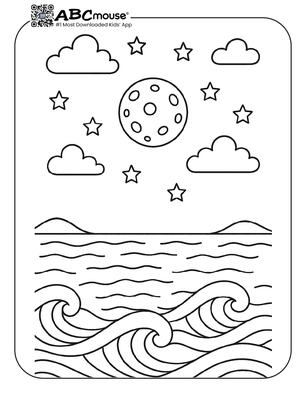
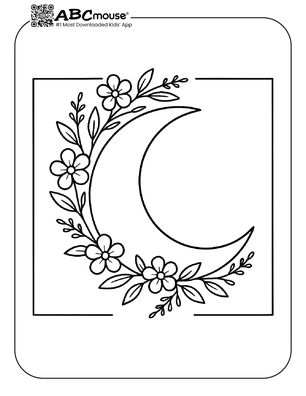
Crescent Moon Bordered with Flowers
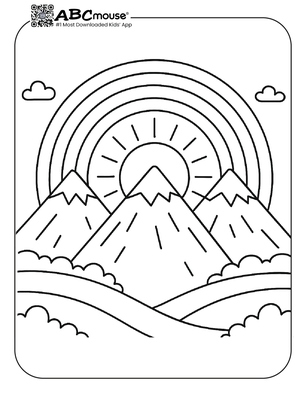
Sun over Mountains with Rainbow
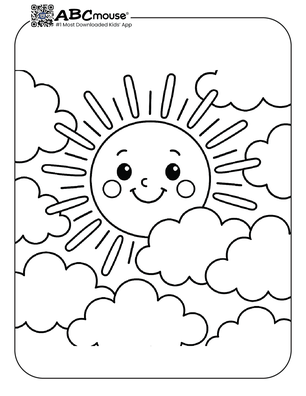
Sun Breaking Through the Clouds
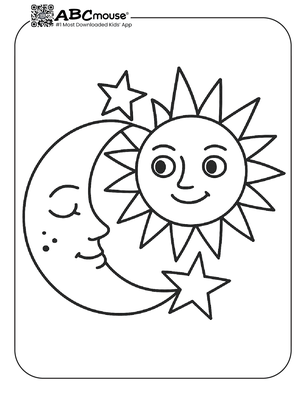
Fun Games and Activities to Pair with the Sun and Moon Coloring Pages

Fact Match: The Sun
In this fun quiz-style game, kids match facts about the Sun—like its size and role in the solar system—to the correct questions, building science knowledge and critical thinking skills along the way.

Moon Base Number Defense
Blast asteroids and protect the moon base while practicing the concept of greater than and less than with three-digit numbers!


More Hands-on Activities to Try with the Sun and Moon Coloring Pages
Recommended for: Kids of all ages
⭐ Glow-in-the-Dark Moon Art
After coloring, kids can trace over the moon or stars with glow-in-the-dark paint or crayons. Hang them in a dark room for a magical, glowing night-sky effect!
⭐ Day and Night Collage
Kids can cut out their completed suns and moons, then glue them onto a big sheet of construction paper—one side for daytime and one side for nighttime. Add clouds, stars, or trees to complete the scene.
⭐ Solar System Mobile
Punch a small hole at the top of the completed suns and moons, attach string, and hang them from a hanger or paper plate. Add stars or planets to create a mobile that can be displayed in a bedroom or classroom.
New Initiative Bridges Classroom and Home Learning
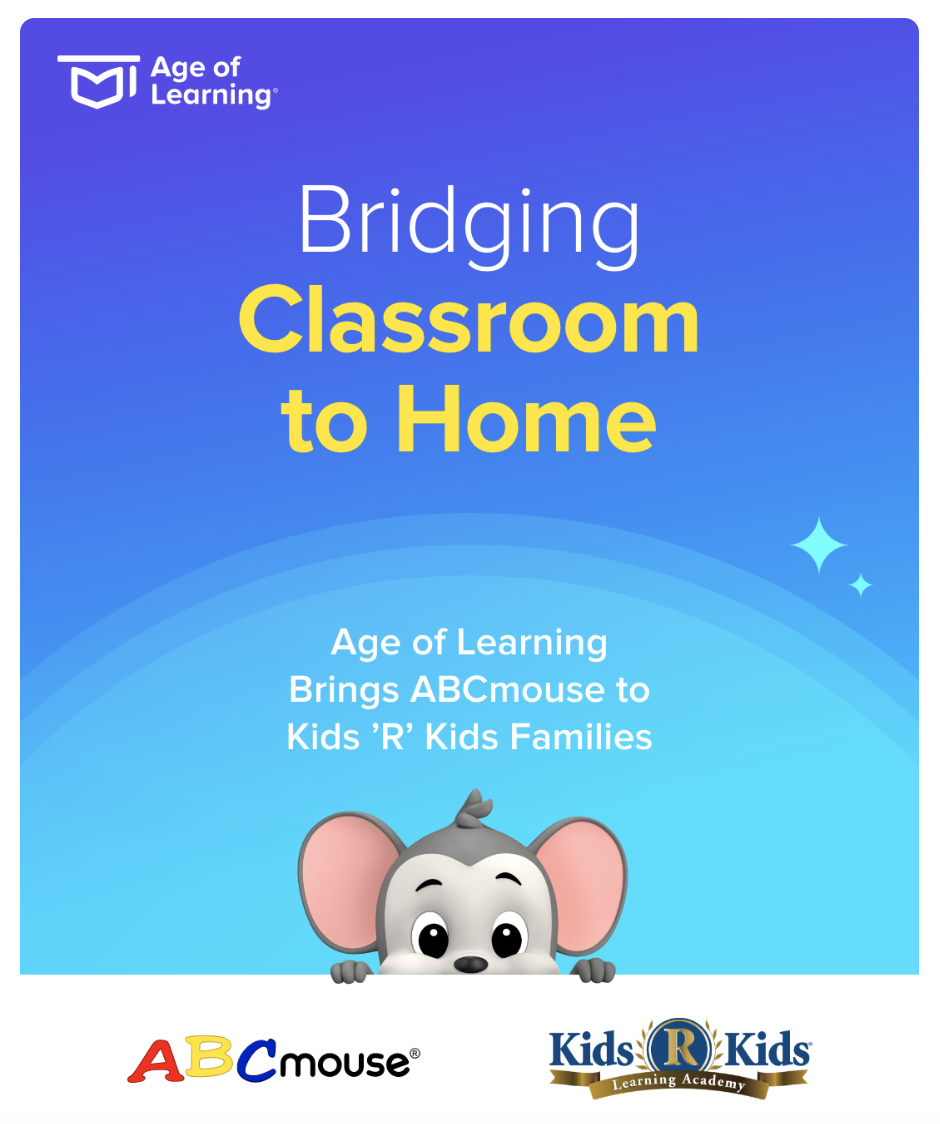
Los Angeles, September 9, 2025–
Age of Learning Inc., the leading education technology innovator, today announced the launch of a home learning extension program that connects private preschool curricula with ABCmouse®, Age of Learning’s comprehensive digital learning platform. In partnership with Kids ‘R’ Kids Learning Academies, one of the nation’s premier private preschool franchises with over 170 locations, this pilot model promises to transform how families engage with early education beyond the classroom.
The new program enables participating preschools to offer families structured, curriculum-aligned activities through Age of Learning’s award-winning ABCmouse platform. This initiative advances Age of Learning’s mission of helping children everywhere build a strong foundation for academic success and a lifelong love of learning by ensuring that education doesn’t stop at the classroom door. The program provides caregivers with the tools and support they need to confidently continue their child’s learning journey at home while reinforcing the valuable work teachers do in the classroom every day.
“Families are looking for high-quality educational experiences that capture their children’s imagination and build real skills,” said Alex Galvagni, CEO at Age of Learning. “Our partnership with Kids ‘R’ Kids demonstrates how expert curriculum and engaging digital learning can authentically extend quality preschool education into the home.”
The program connects ABCmouse’s comprehensive educational content—including thousands of learning activities in reading, mathematics, science, social studies, art, and music—directly to Kids ‘R’ Kids’ curriculum. This enables parents and children to engage in highly interactive educational activities together at home that directly support concepts and skills taught in the classroom.
“This collaboration deepens our impact on the families and communities we serve,” said Kimberly Sharpe, Chief Branding Officer at Kids ‘R’ Kids. “By connecting our curriculum with Age of Learning’s engaging digital platform, we’re empowering families to become active partners in their children’s educational journey while supporting our educators.”
With immediate availability at participating Kids ‘R’ Kids locations and plans to extend the program to additional preschool partners, Age of Learning is helping redefine how early education bridges the classroom-to-home learning gap—ensuring every child develops the confidence and skills they need to thrive as learners.
About Age of Learning
Age of Learning® is the leading developer of engaging and effective Pre-K through 2nd grade learning resources that help children build a strong foundation for academic success and a lifelong love of learning. The company’s research-based curriculum, developed by education experts, includes the award-winning programs ABCmouse® and Adventure Academy®, as well as the adaptive, personalized school solutions, My Math Academy®, My Reading Academy®, and My Reading Academy Español®. Having served over 50 million children worldwide, Age of Learning is a global leader in efforts to advance equity, access, and opportunity for all children. To learn more about Age of Learning, visit AgeofLearning.com.
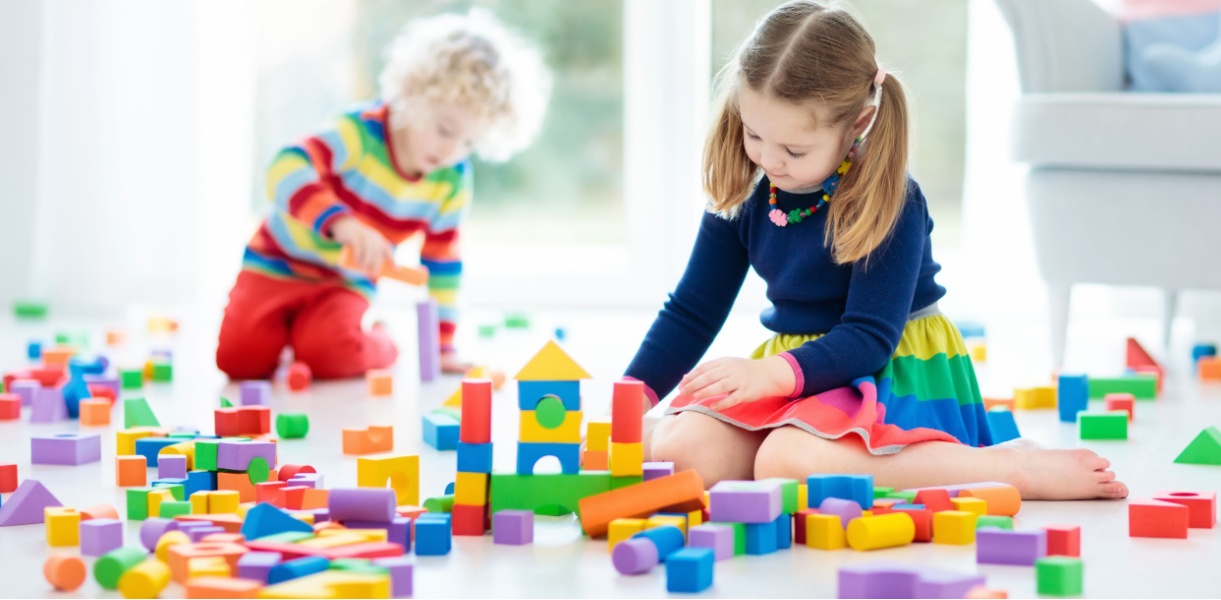
Share
What Is Parallel Play? Examples, Benefits, and Activity Ideas for Kids
When children play side by side in similar activities, they lay the groundwork for future friendships and teamwork.
Table of Contents–Jump to Each Section
What Is Parallel Play in Early Childhood?
In parallel play, young children play side by side with similar toys or activities, but generally don’t directly interact with one another. Sometimes they watch each other or imitate what they see, but they’re still more focused on their own play.
As part of the Six Stages of Play in Early Childhood, parallel play is an important bridge between solitary and social play. It’s very common in preschool classrooms and playgroups, where kids are learning to be comfortable around others their own age.
Parallel Play Examples:
- Three children play with a big box of LEGOs. Each is focused on building their own structure: one builds a tower, another builds a house, and the third makes creatures from the bricks.
They occasionally ask each other for bricks, and may sometimes pause to see what their playmates are building. Ultimately, though, each child plays independently toward their own goals. - Four children sit at a table fingerpainting. They occasionally talk to each other while they work, but are primarily only interested in their own paintings. One child watches another as they mix together red and blue to make purple, then quietly copies their behavior, but doesn’t say anything about it.
- One child is coloring, using a big bin of crayons. A second child comes in and sees the crayons. She sits down next to the child who is coloring, chooses her own coloring book, and begins to do the same. Neither of the children talks much to each other, each focused on their own activities.
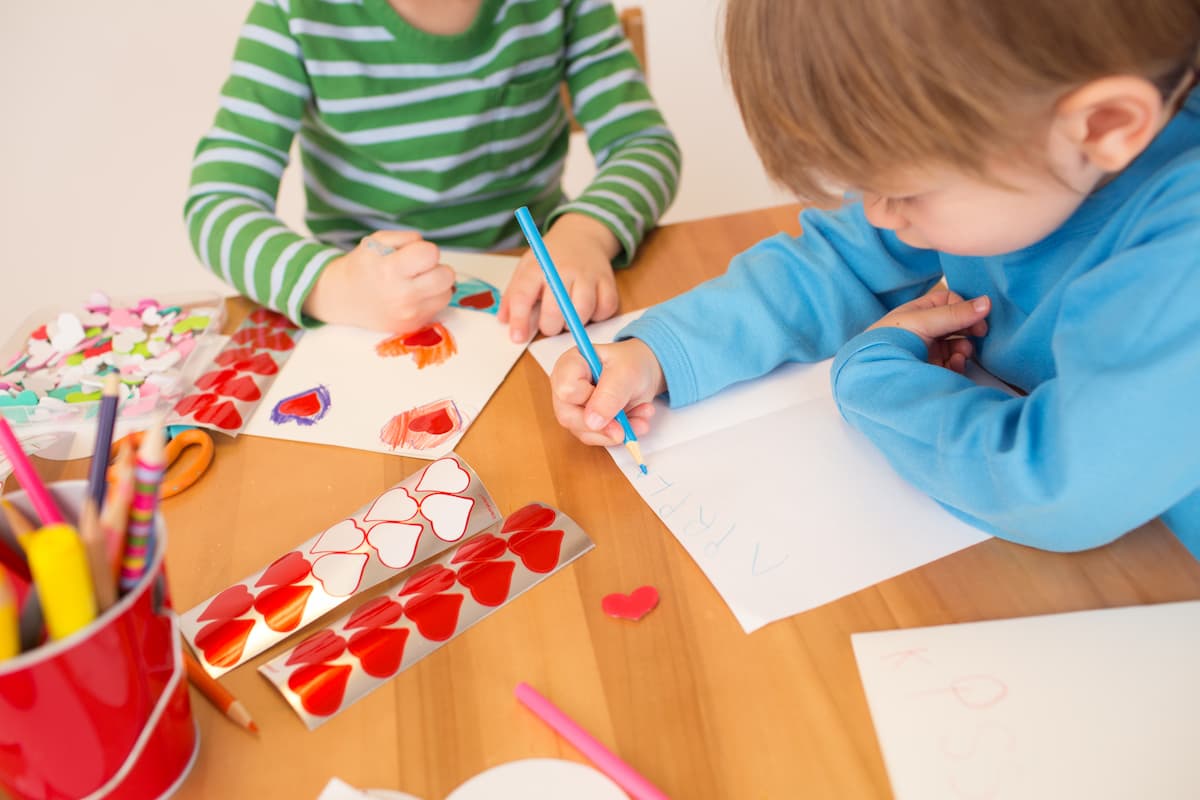
When Does Parallel Play Begin?
Most children begin participating in parallel play as toddlers, between the ages of 2 to 3. All children develop at their own rate—some start parallel play earlier or later than others.
To experience parallel play, kids need to spend time with other children their own age. Kids who participate regularly in playgroups, playdates, or preschool activities are likely to start parallel play earlier than children who rarely have a chance to play with peers of similar ages.
Key Benefits of Parallel Play
Along with the usual benefits of play (like motor skills development), parallel play provides many social-emotional learning benefits, such as:
- Social Awareness: When a child engages in side-by-side play, they become more comfortable in the presence of others. They pick up on social cues, become more aware of personal space, and learn to respect the play of others, even if they’re not directly interacting with each other.
- Language Development: Simply hearing others talk and interact helps children develop their own verbal skills.
- Observation and Imitation: When kids play near others, they may stop to watch from time to time. This can give them new ideas to try, games to play, and even teach problem-solving strategies.
- Self-Regulation: In parallel play, children often use similar toys or tools and must learn to share space with others. They may need to tune out other actions and noises while they play, sharpening their concentration and focus.
Parallel play lays the groundwork for cooperative play, the ultimate stage of play. The social-emotional skills they build throughout this stage prepares them for taking turns, sharing common goals, following rules, and engaging in group problem-solving as they get older.
Parallel Play vs. Other Stages of Play
As part of the 6 Stages of Play, parallel play bridges the gap between earlier individual play and later cooperative play. Here’s how to tell the difference between parallel play and other similar stages.
Solitary Play vs. Parallel Play
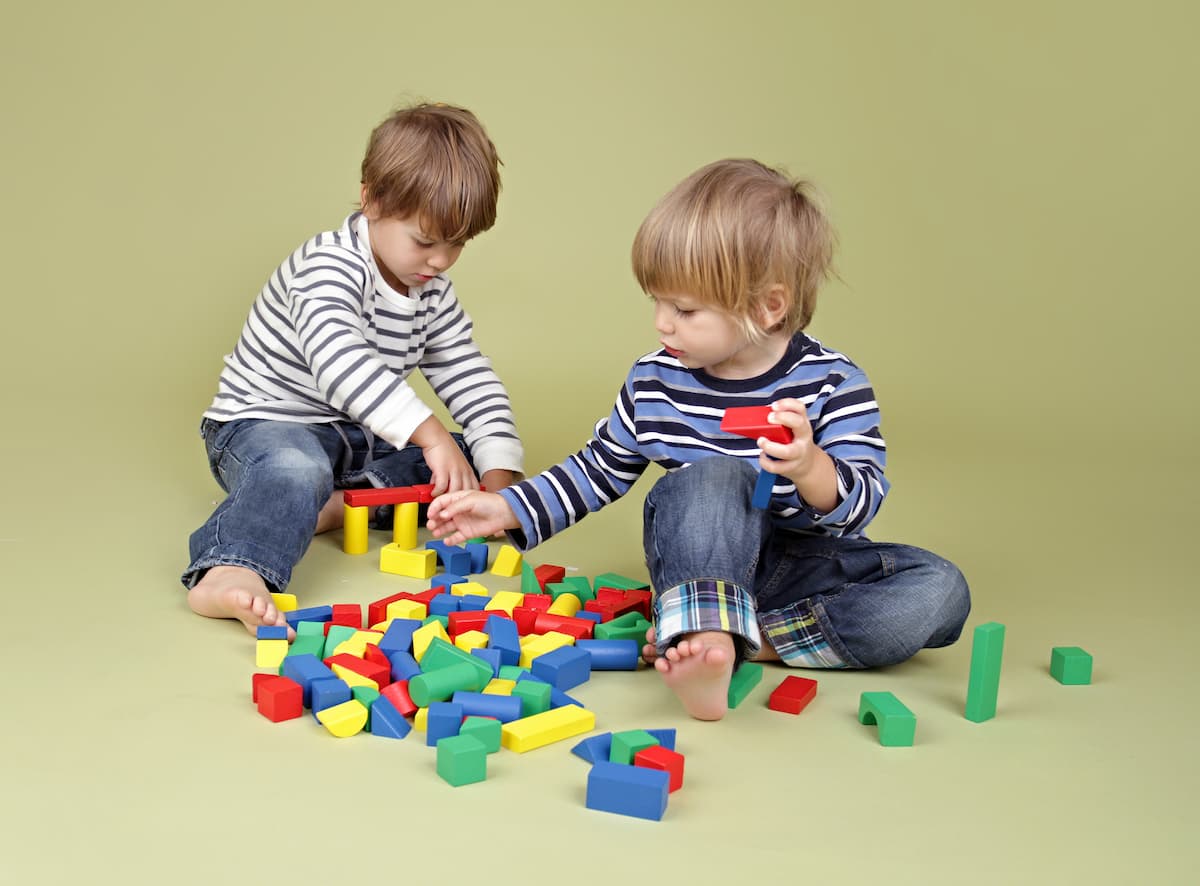
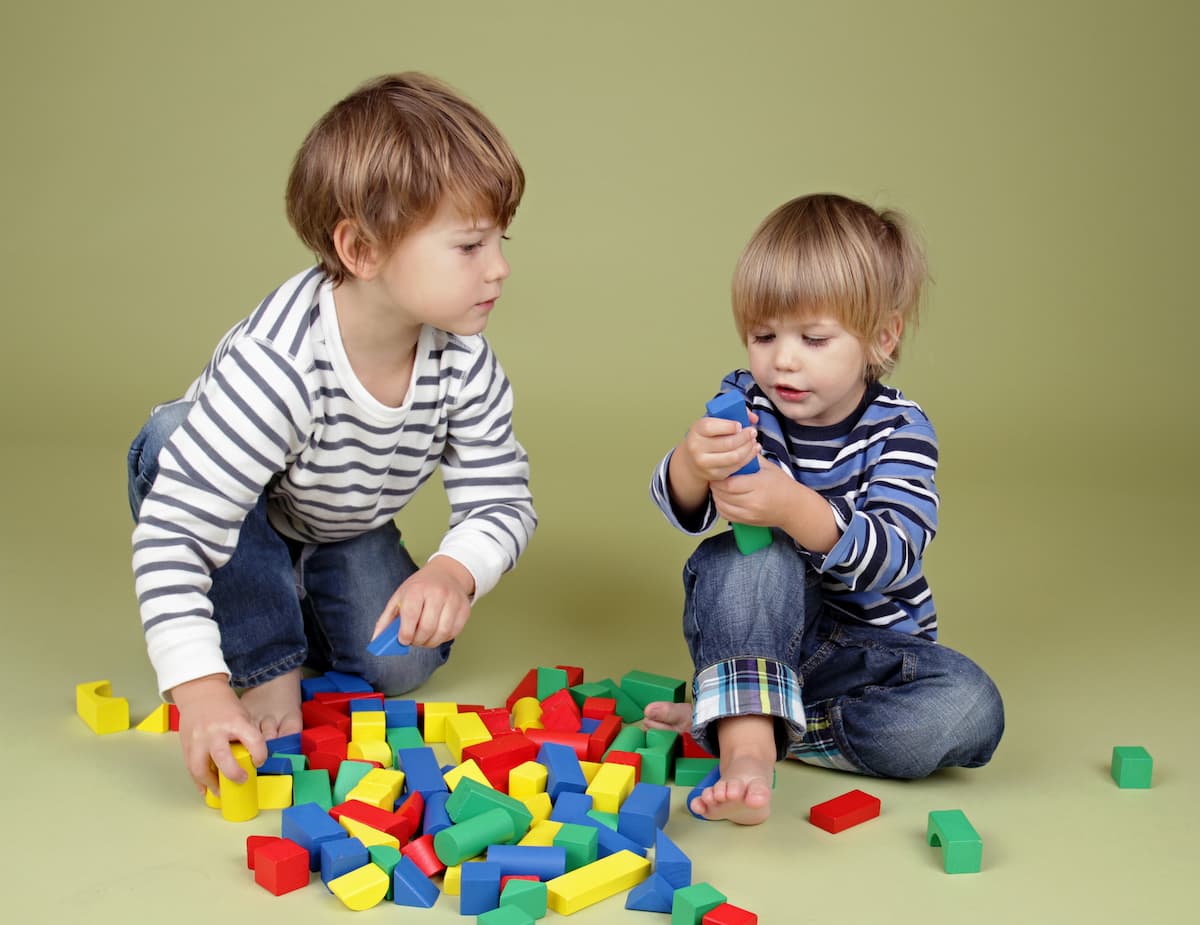
As part of the 6 Stages of Play, parallel play bridges the gap between earlier individual play and later cooperative play. Here’s how to tell the difference between parallel play and other similar stages.
Solitary play can look similar to parallel play, but in parallel play, kids are more aware of their peers. They may watch or imitate others without directly interacting. Both are forms of independent play, but parallel play adds a social element, helping kids learn to share their space with others.
Parallel Play vs. Associative Play
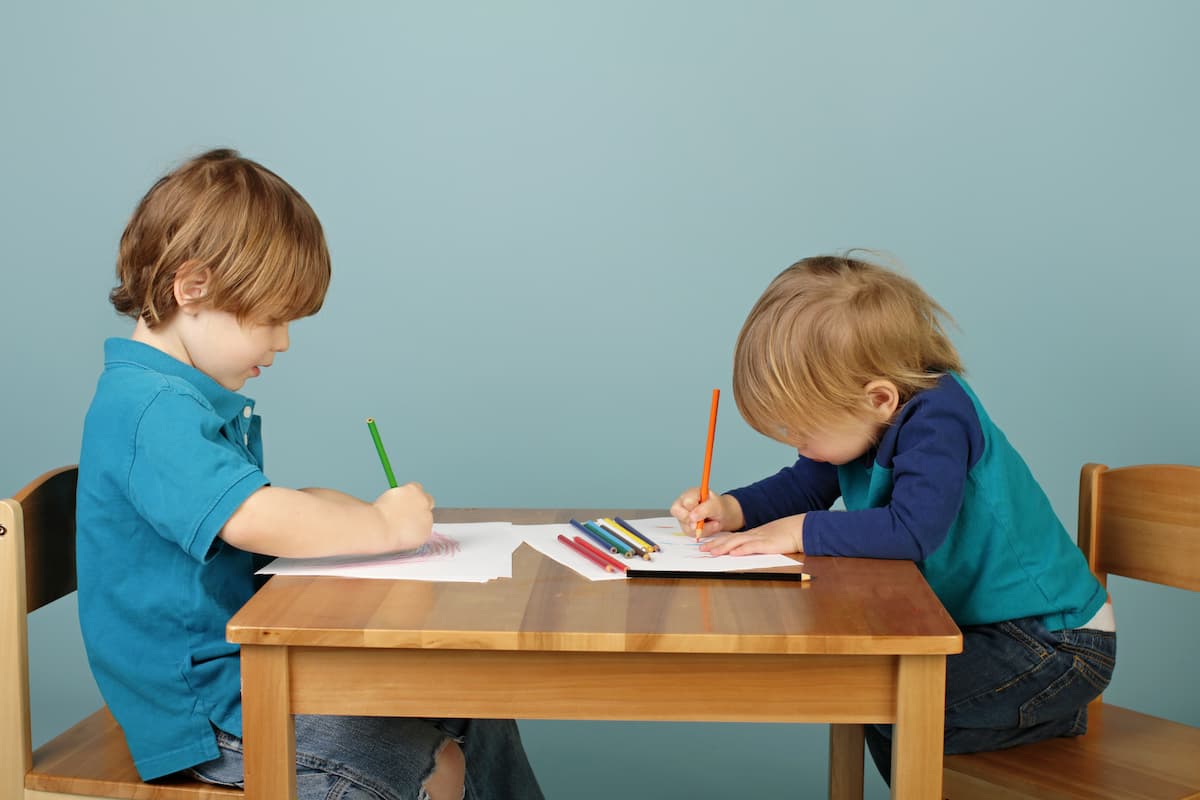
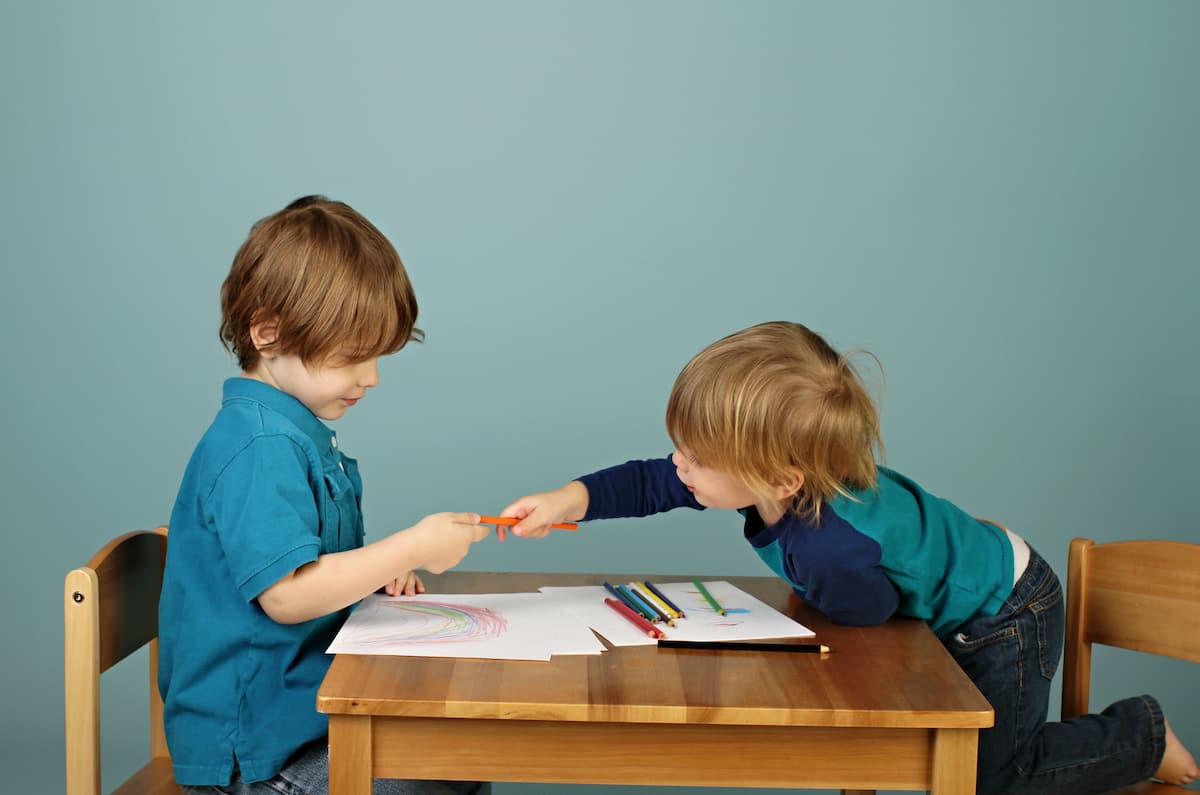
Associative play is the fifth stage of play, the next step after parallel play. In associative play, kids interact more with their peers—they show off their toys, offer to share, and explain or demonstrate how to do things. They often talk and comment on each other’s activities. However, unlike cooperative play, there’s no shared goal. Each child still focuses on their own tasks while enjoying the social connection.
The main difference between parallel and associative play is the amount of interaction between children. For example, imagine two children drawing at the same table. In parallel play, each chooses their own crayons and focuses on their own creations, usually working quietly. In associative play, they actively share crayons, tell each other about their drawings, and chat while they work.
Parallel Play vs. Cooperative Play
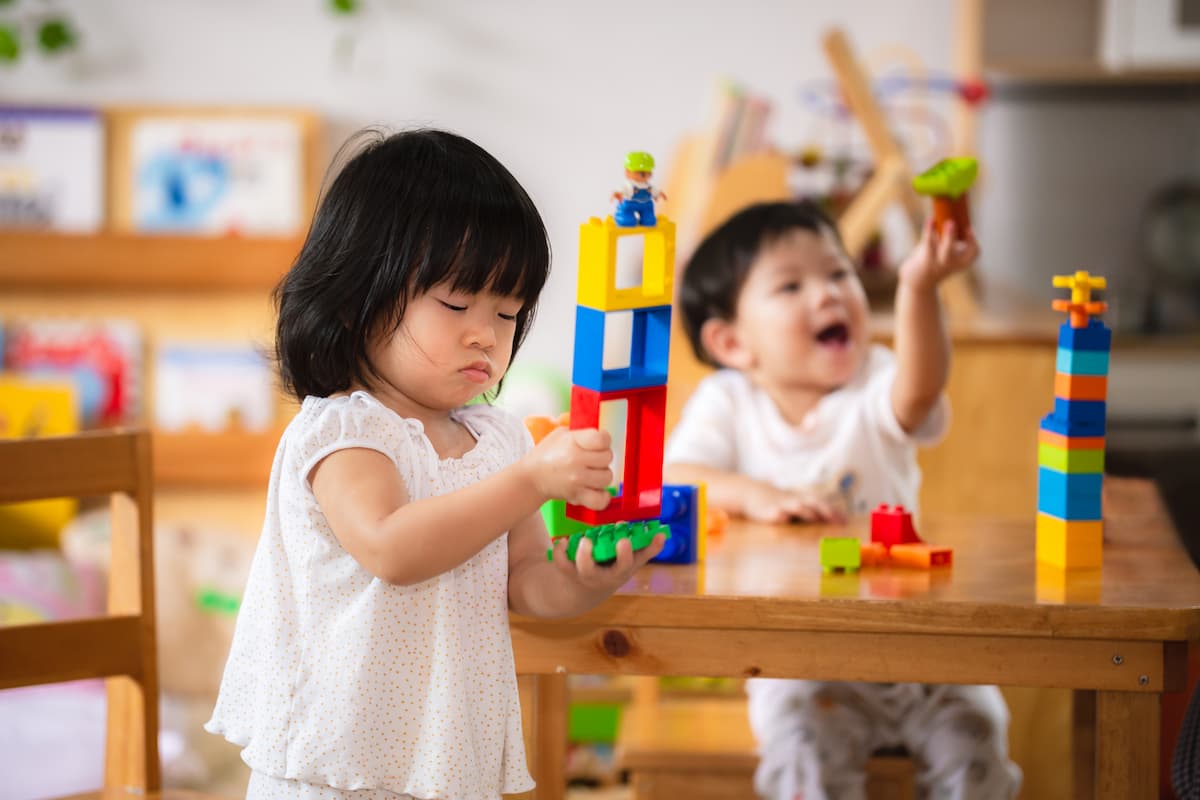
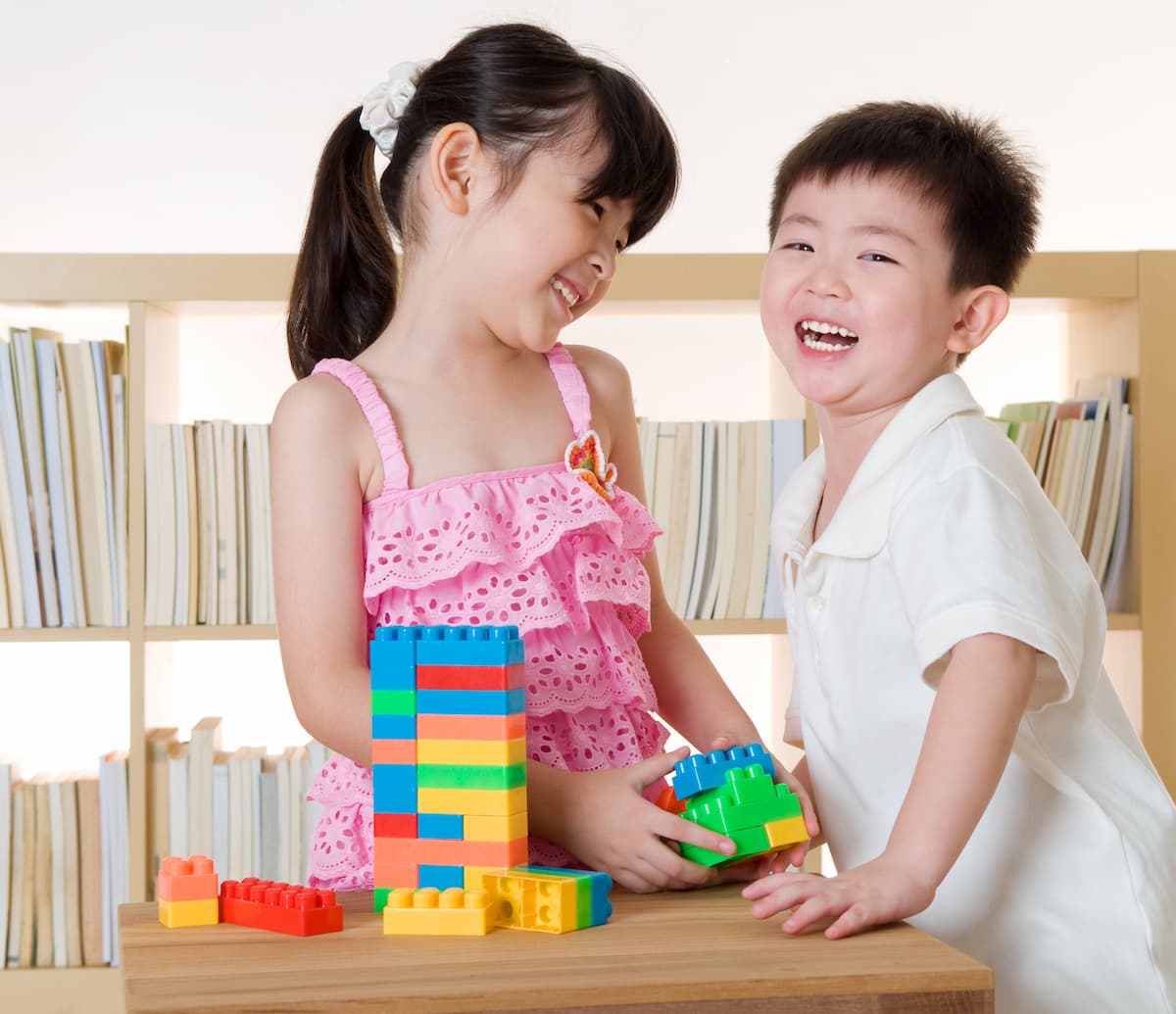
Cooperative play is the final stage of play, when players share a common goal, follow agreed-upon rules, and share the toys and tools needed for the game or activity. Cooperative play is collaborative, requiring a lot of verbal and nonverbal communication.
In parallel play, kids have their own goals and interact very little. Consider the example where three children are playing with a box of LEGO® pieces. In parallel play, kids each work with their own pile of bricks and create their own projects, perhaps copying what they see others do but generally focusing on their own goal. In cooperative play, the three children work together to build a giant castle, sharing pieces, making suggestions, and working out the solutions to challenges together as they play.
10 Parallel Play Activities to
Encourage Side-by-Side Play
🏠 Indoor Parallel Play Activities 🏠
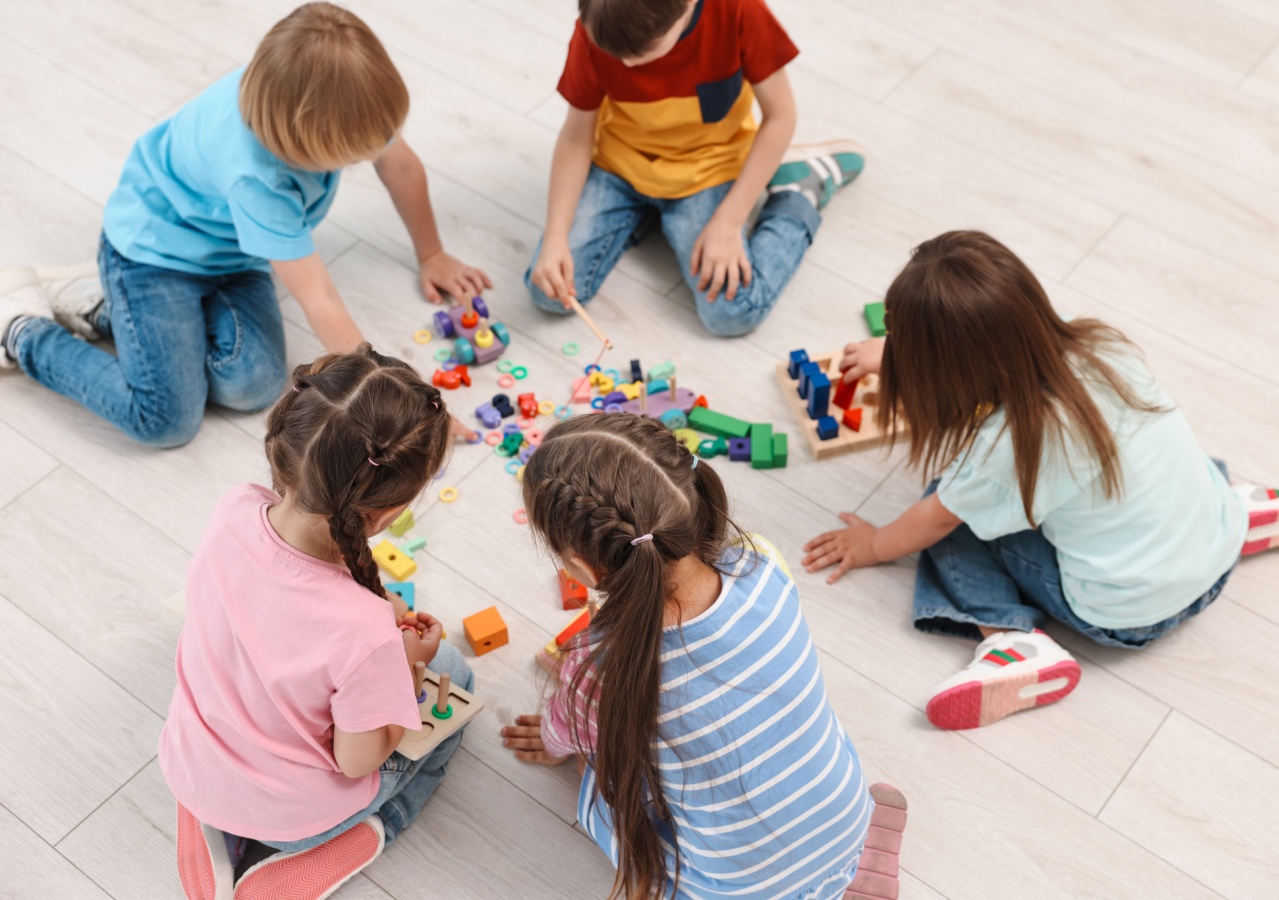
1. Puzzle or Block Time
Provide individual puzzles or sets of blocks with similar difficulty and shapes on a shared rug or table. Let children focus on their own puzzle and building.
When each child finishes their puzzle or structure, encourage them to admire the work of the other children. Then, ask them to take their puzzle or structure apart and exchange it with a peer for another set to work with.
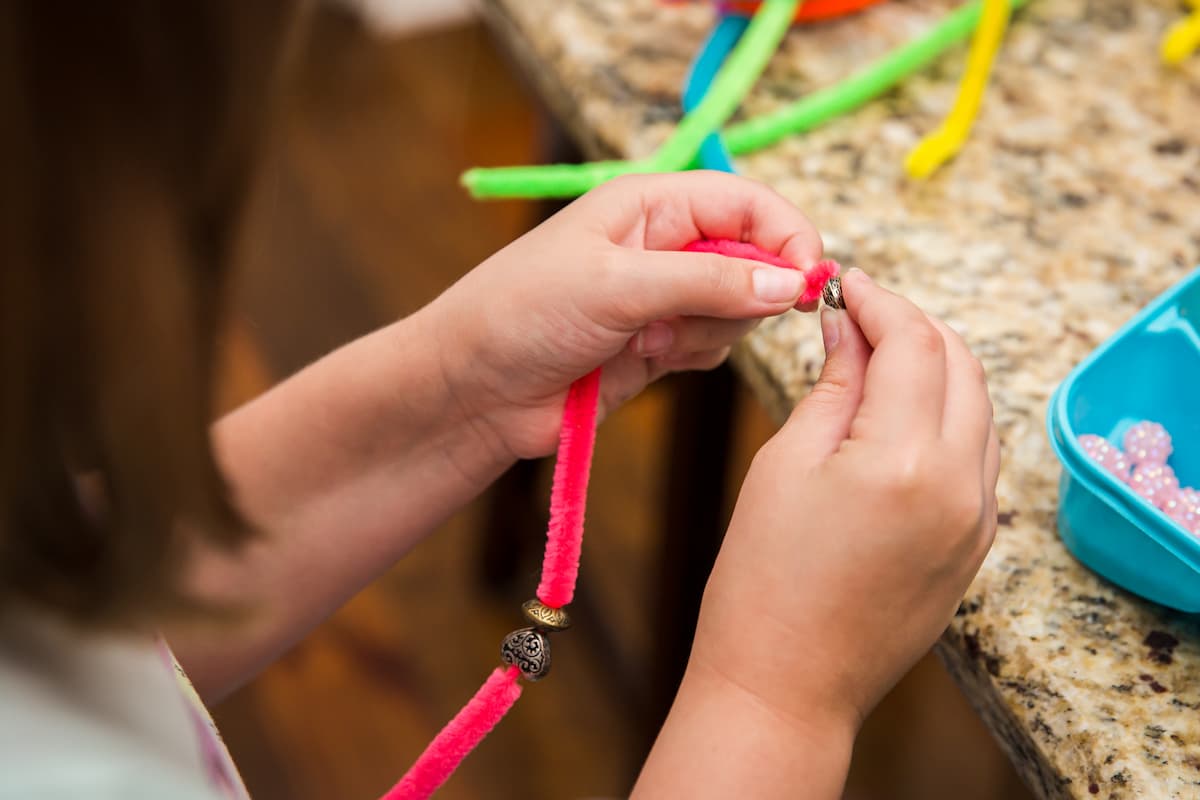
2. Bead Bracelets
Give each child pipe cleaners and a container of age-appropriate beads. Kids can create their own patterns by stringing the beads onto the pipe cleaners, then twisting the ends together to form a bracelet.
When everyone is done with their first bracelet, take time to look at everyone’s creations. Then, let kids make more bracelets, possibly using some of the patterns or techniques they learned from others.
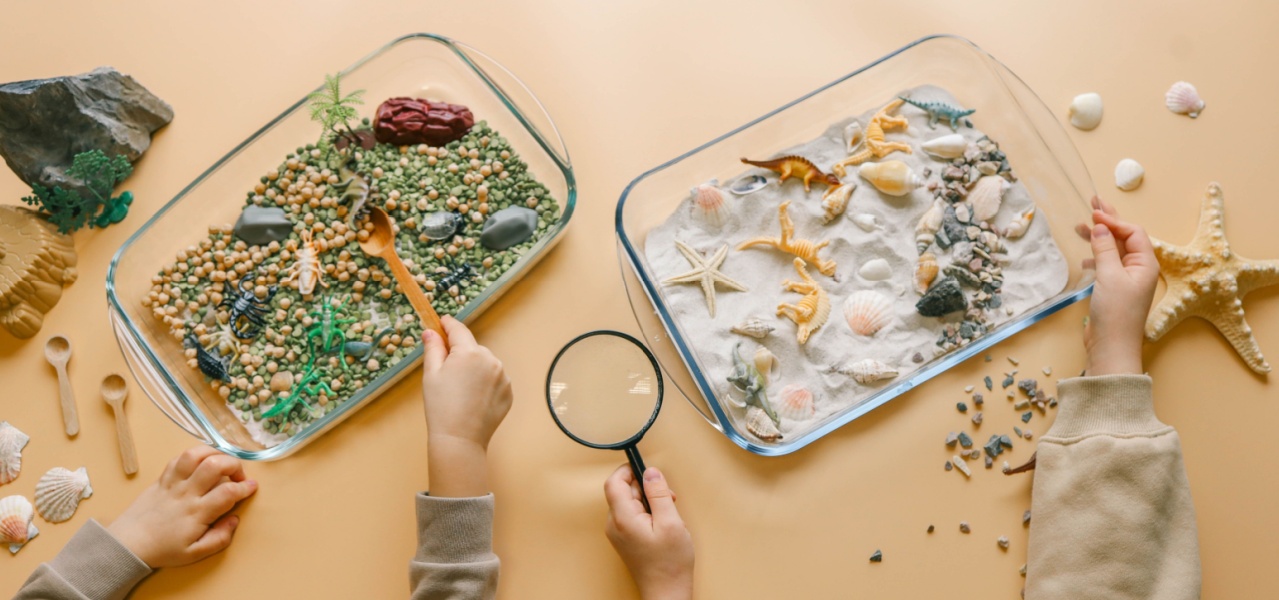
3. Side-by-Side Sensory Bins
Provide individual sensory bins, one for each child, each with their own materials. Let each kid play in their own bin for a while, then have them move to new bins so each child gets to try all the different sensory experiences.
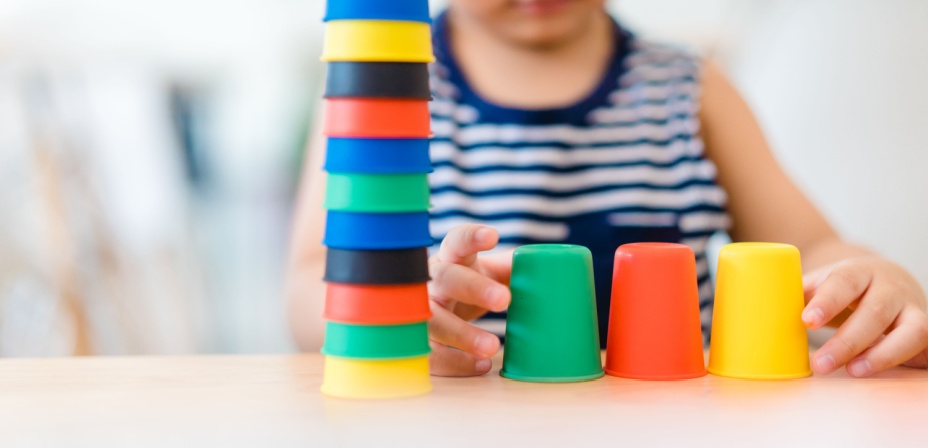
4. Cup Stacking
Give each child a set of stacking cups or plastic cups at their own space on the table. Encourage them to make towers, patterns, or designs as they work side-by-side without merging structures. Invite them to check out each others’ creations from time to time to help inspire new ideas.
5. Grocery Store
Set up a grocery store experience with bins or shelves of play foods, plus a toy cash register for checking out. Provide each child their own basket and let them shop on their own, ringing up their own groceries when they’re done. Be sure your set up includes different sections to space kids out, and provide multiples of various toy foods so kids can each complete their “shopping list.”
🌳 Outdoor Parallel Play Activities 🌳
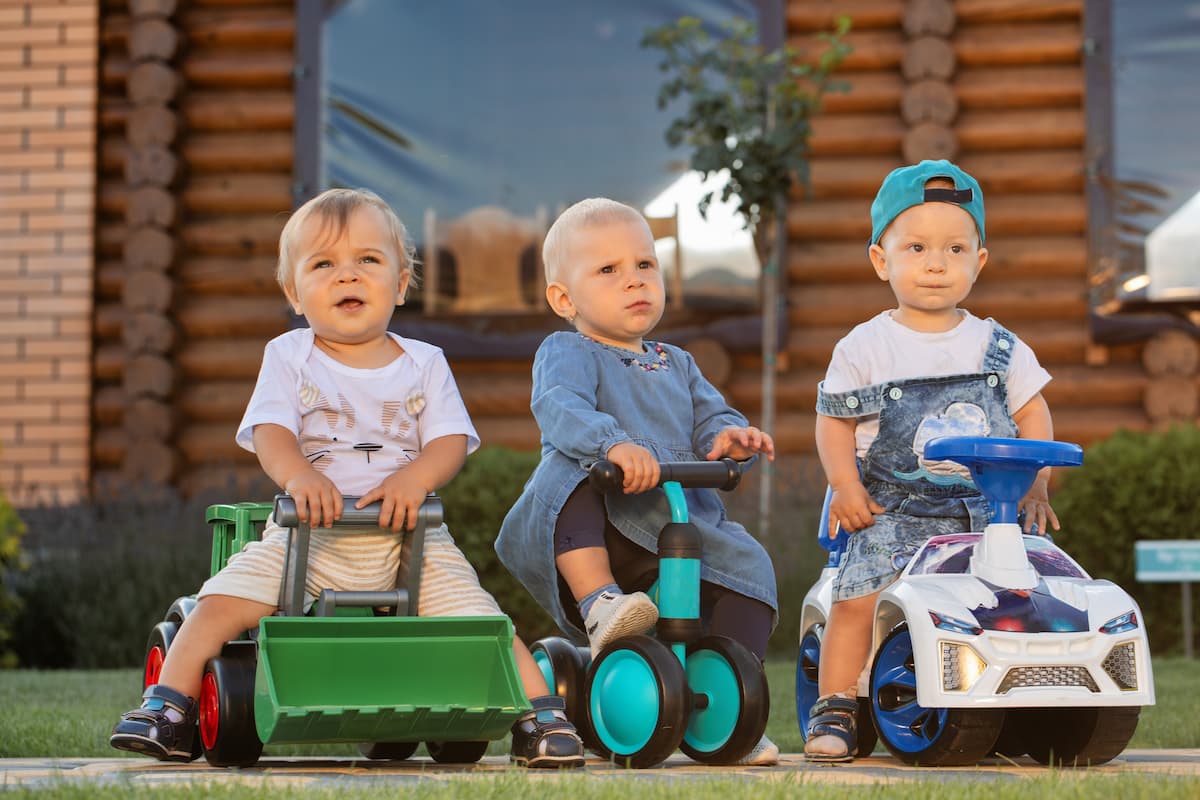
6. Ride-On Toys
Provide bikes, scooters, or trikes in a safe shared area. Let children ride near each other, praising independent skills and gentle observation of peers’ movements. This builds spatial awareness, which is important for safety as kids learn to play together.
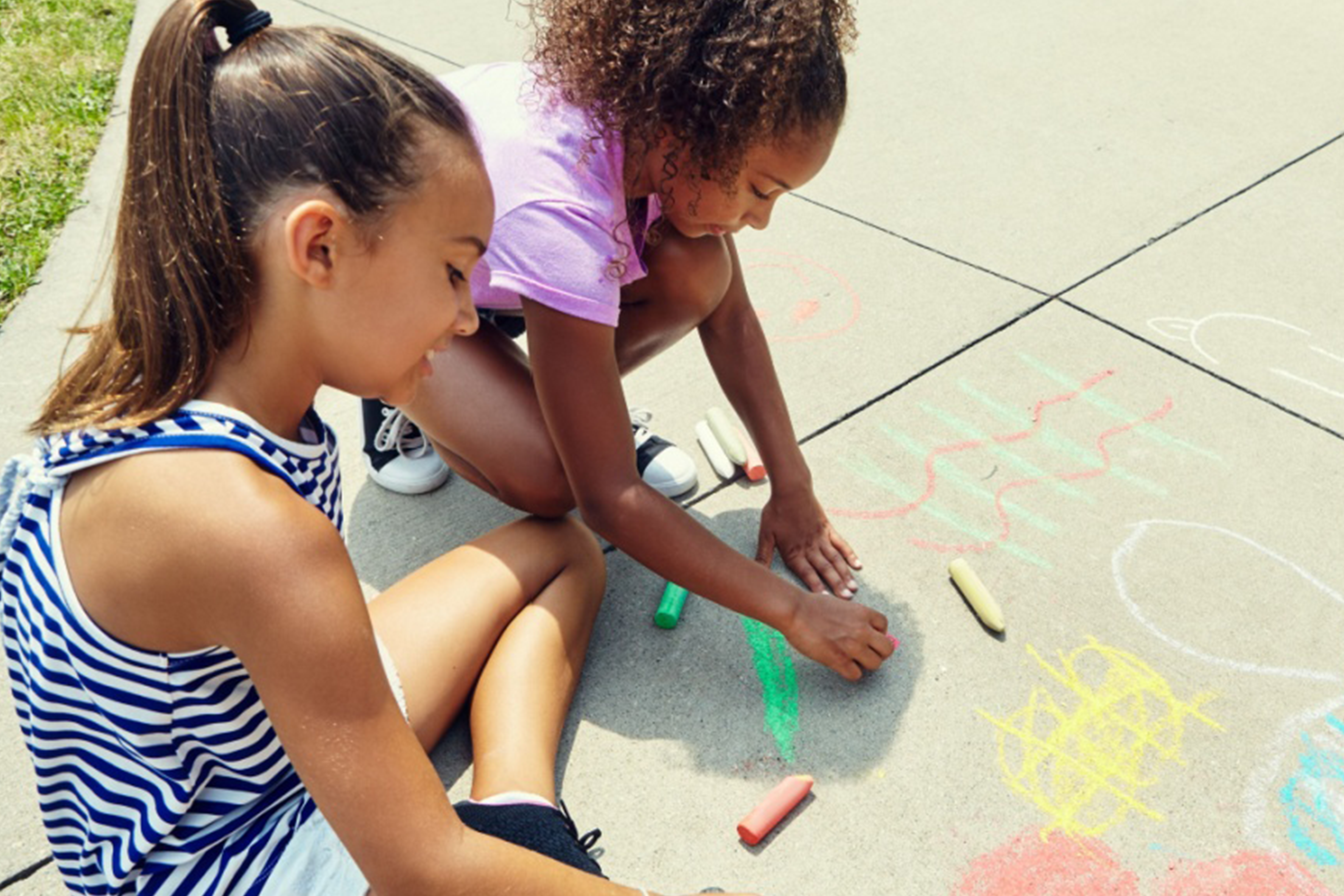
7. Sidewalk Art
Give each child their own container of sidewalk chalk and a section of pavement (sidewalk squares are ideal for this or individual segments of a driveway). Invite them to draw freely while noticing each other’s work; encourage kids to take inspiration from each other without requiring collaboration.
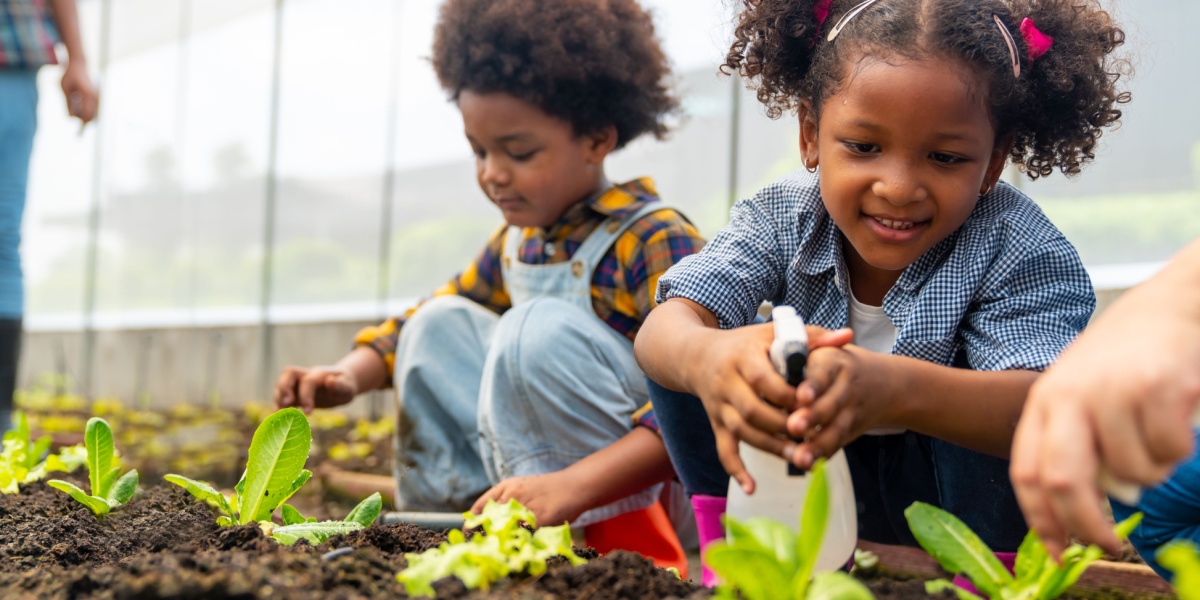
8. Side-by-Side Gardening
Provide small plots or pots, seeds, soil, and tools for each child. Let each choose what they’ll plant and decide how to tend their garden. Encourage kids to observe how others dig or water, but don’t require them to collaborate or share their individual spaces.
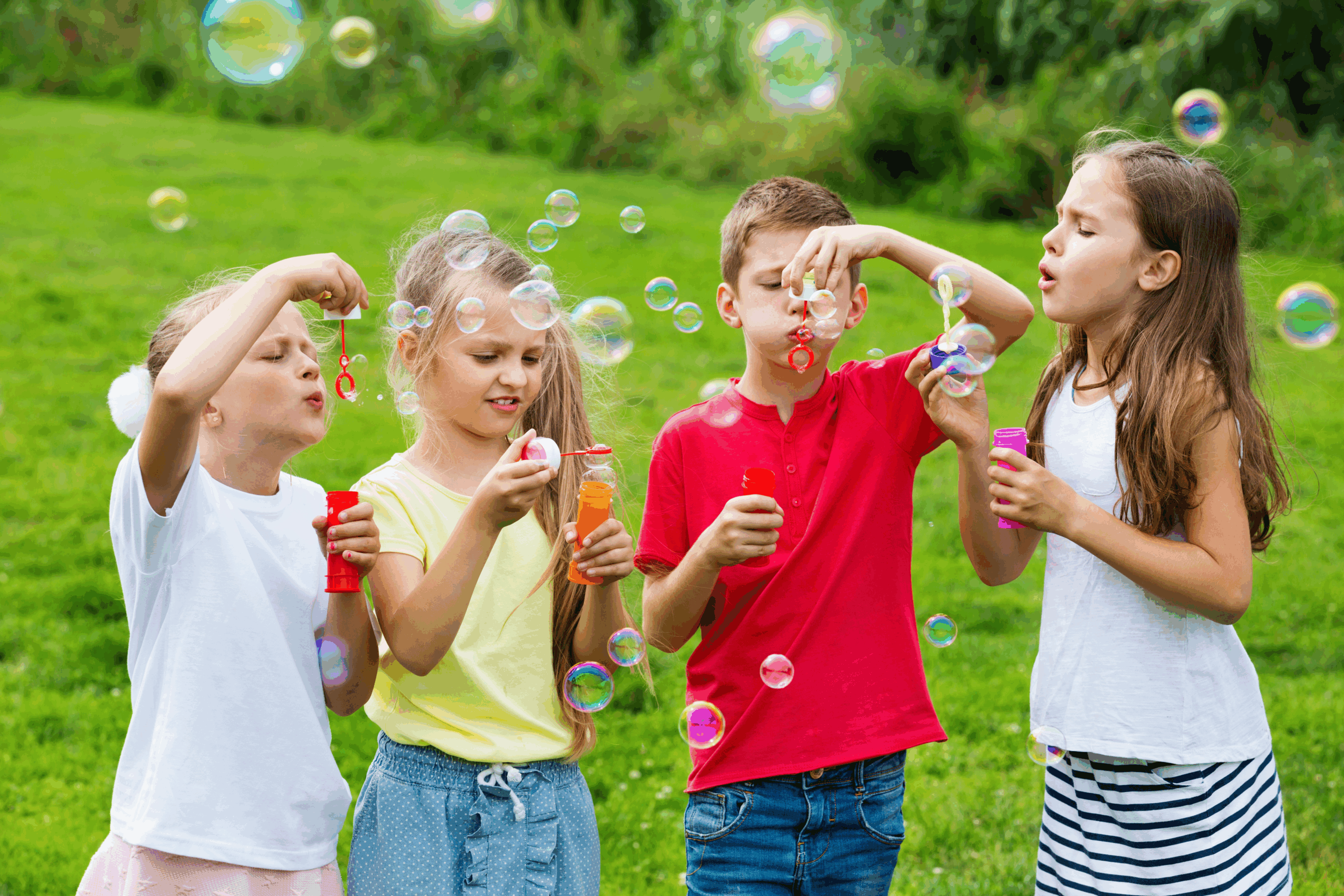
9. Bubble Play
Give each child a container of bubbles and a bubble wand. Let them blow bubbles independently, watching their peers to learn new techniques and different ways to create bubbles. You can also turn on a bubble machine and let each child experience them in their own way, popping them, dancing around in them, or just watching them float.
10. Nature Hunt
Provide each child a basket or bucket, then take a nature walk together. Let each collect their own items (supervise for safety) based on what interests them most. When you return home, have kids sit near others to examine, sort, and play with their items, and hopefully notice other’s collections from time to time.
Get more play ideas with our posts on 25+ Play-Based Learning Activities for Preschoolers and Kindergarteners, Cooperative Play Activities for Your Home or Classroom, and 15+ Sensory Play Ideas.
How Adults Can Support Parallel Play
Children tend to go through the stages of play naturally as they get older, but parents and caregivers can help provide opportunities and experiences that encourage parallel play.
Playgroups:
In order to truly experience parallel play as a developmental stage, kids must spend time around other children their own age. The easiest way to support parallel play is to give your child the chance to participate regularly in playgroups, playdates, or preschool activities.
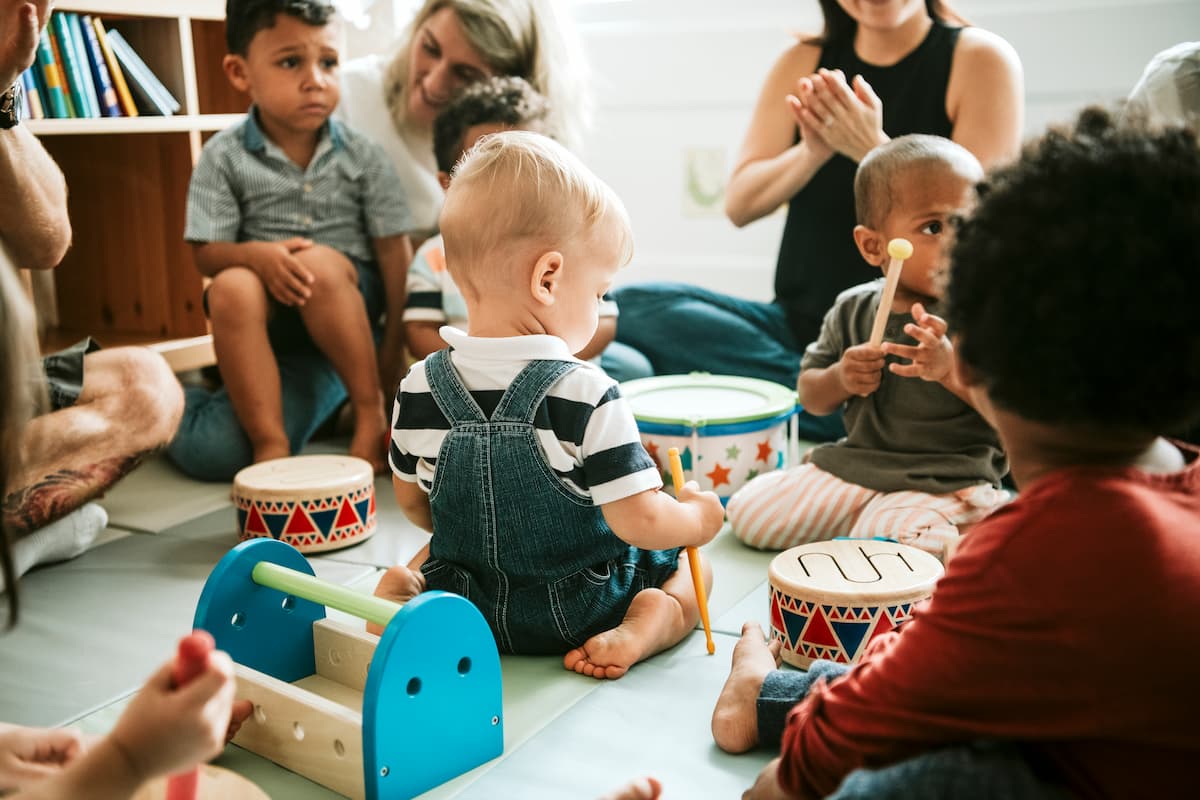
Even though it may look like all the kids are playing on their own rather than together, these parallel play activities are providing valuable social learning experiences.
Multiples of Toys or Tools:
Remember that kids engaging in parallel play are still learning how to share. To play side by side, kids need enough toys or materials for each to have some of their own.
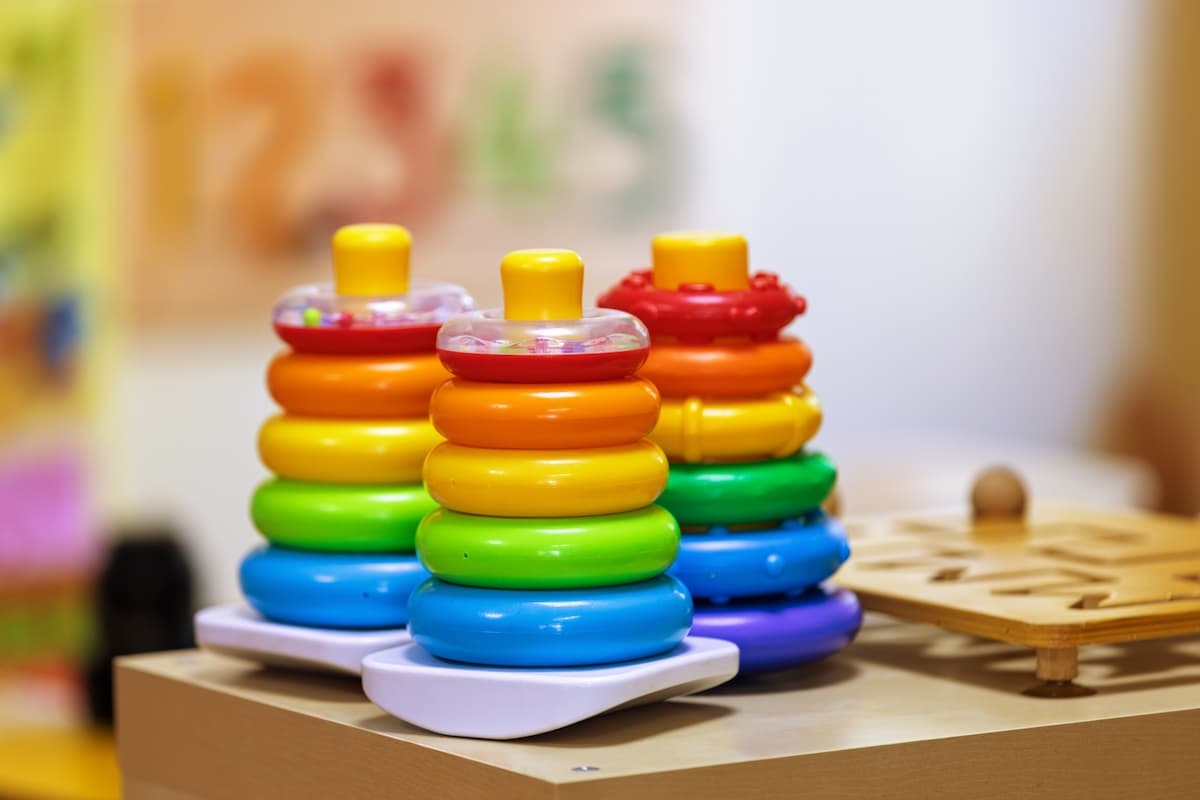
Provide several sets of crayons and coloring books, separate bins of blocks or building toys, and multiple dolls or other toys for imaginative play.
Adequate Space:
Be sure you have plenty of room for kids to play near each other without crowding each other out. Show kids how to move around a space safely while being aware of others. You might say, “It’s so fun to run around pretending that you’re different zoo animals! Why don’t you move over here while you play, though, so you don’t get in Lila’s space while she puts together that puzzle.
Gentle Encouragement:
When kids first make the transition from solitary to parallel play, they may need a bit of guidance. Parents can model behaviors by sitting down with other children to play nearby, and inviting their own child to join them: “Oh, those building blocks look like fun. Do you mind if we use a few to play with? Come on, Parker, let’s sit here and see what we can make.”
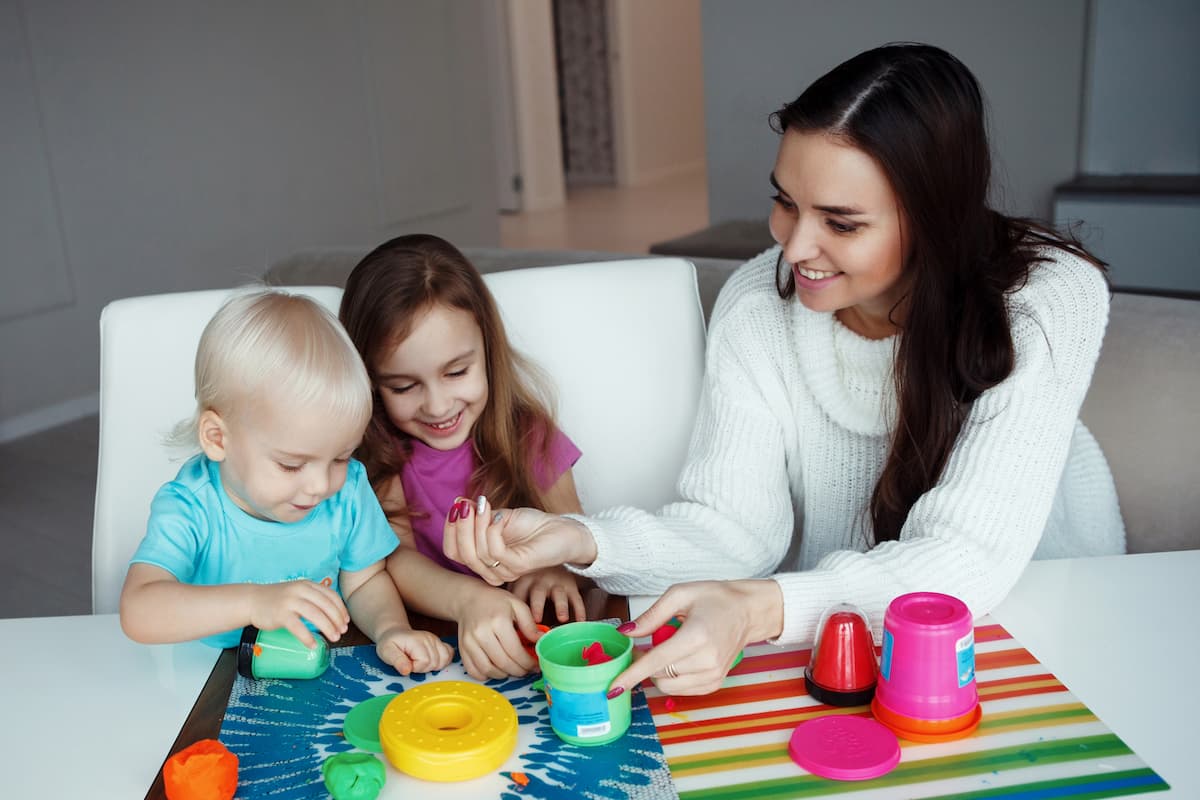
Eventually, children will become comfortable with these behaviors on their own without needing an adult close by.
Parallel play may look simple, but it’s a key step in your child’s social and emotional growth. Try the activities above to support learning and connection, and check out our guide to Cooperative Play for the next stage in development.
Common Parallel Play FAQs
What does parallel play look like?
Key characteristics of parallel play include:
- Independent but not solitary
- Little or no interaction between children
- Minimal sharing or cooperation
- Comfortable with other kids playing nearby
- Some observation and imitation of others
What age does parallel play begin?
Most children begin parallel play around age 2 to 3, however, all children develop at their own rate. If you’re concerned that your child hasn’t started parallel play, talk to your child’s teacher or pediatrician.
What are examples of parallel play?
- Kids playing in the same sandbox, each digging their own holes or making their own sandcastles
- Two children exploring a box of musical instruments, each focused on their own instrument and the sound it makes without attempting to coordinate with the other child
- A group of kids using clothes from a dress-up box, each creating their own independent characters and stories
- Several children playing with playdough at the same table, each focused on their own creations
Why is parallel play important for children?
- Parallel play helps children become comfortable around others their own age, developing social skills and self-management.
- Kids pick up new ideas by watching and imitating others, and learn to share space amicably as they play.
- Parallel play sharpens focus, as children may need to tune out others to accomplish their own goals.
How is parallel play different from cooperative play?
- In parallel play, play with similar toys or activities, focusing on their own goals. They may watch or imitate others, but rarely interact as they play.
- In cooperative play children work together toward a shared goal, follow agreed-upon rules, and share the toys or materials needed for the activity. It is highly collaborative, involving both verbal and nonverbal communication.
How can parents support parallel play?
- Provide opportunities for children to play side-by-side with their peers. Set up playdates, or participate in playgroups or preschool activities.
- Provide multiples of toys as children are still learning how to share.
- Give kids plenty of room to play individually. Encourage them to be respectful of others’ space and activities as they play.
Legal disclaimer: Any information, materials, or links to third-party resources are provided for informational purposes only. We are not affiliated with and do not sponsor/endorse these third parties and bear no responsibility for the accuracy of content on any external site. All information provided in this article is current as of September 2025.
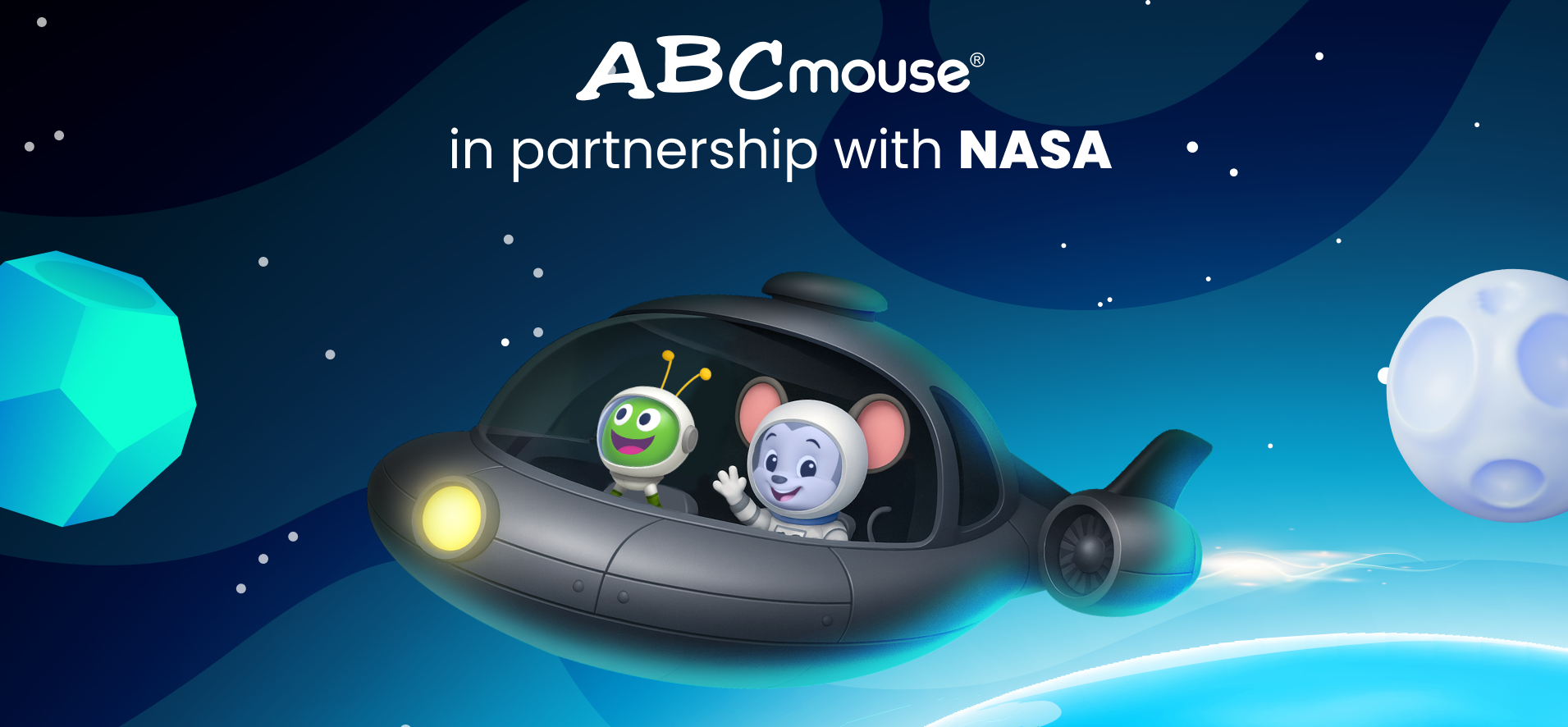
Share
Explore Space with ABCmouse in Partnership with NASA!
Get ready for adventure! ABCmouse is giving your child the ultimate learning resources about space in partnership with NASA.
Blast Off into Learning!
Join ABCmouse in partnership with NASA to bring the excitement and wonder of space exploration to your child’s fingertips! From the Sun–our nearest star—to planets, the solar system, and space rocks, kids can explore the universe through engaging videos, books, games, and art activities.
Table of Contents–Jump to Each Section
Your Child’s Next Big Learning Adventure is Written in the Stars!
Every child looks up at the night sky and wonders: What’s out there? We are turning that natural curiosity into interactive learning experiences and reminding every child that the universe is theirs to explore.
The ABCmouse Space Collection in partnership with NASA helps young learners build fundamental knowledge in science and space by:
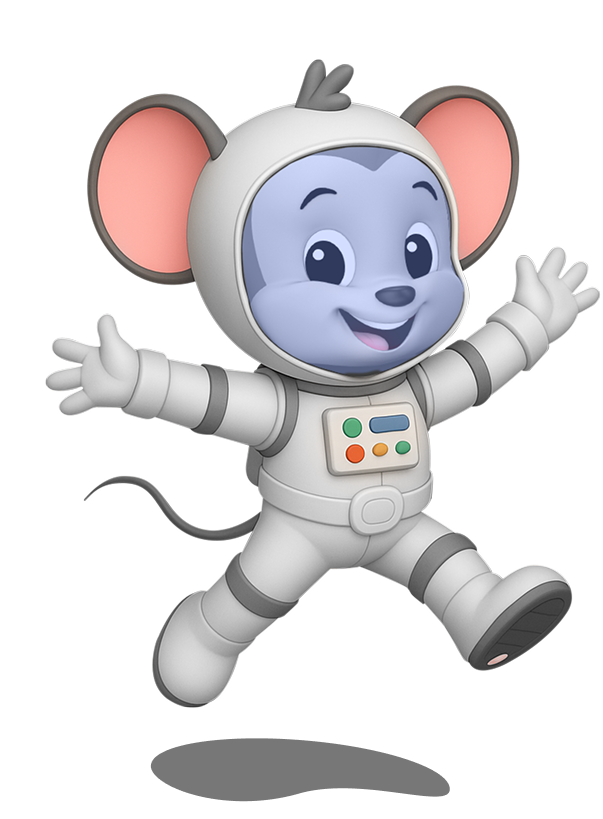
🚀 Guiding them to observe, find patterns, and create simple models of planets, stars, and scientific tools.
🚀 Encouraging them to ask questions, compare what they see, and test new ideas through playful, real-world science.
🚀 Empowering them to think flexibly and persist when solving challenges and exploring new concepts–just like real scientists and astronauts.

Fun Ways to Explore Outer Space!
Wonder Videos
Izzy sparks the curiosity of young learners, powered by real NASA images and videos. Kids will explore questions like Why does the Sun move across the sky? or What makes the Moon shine?
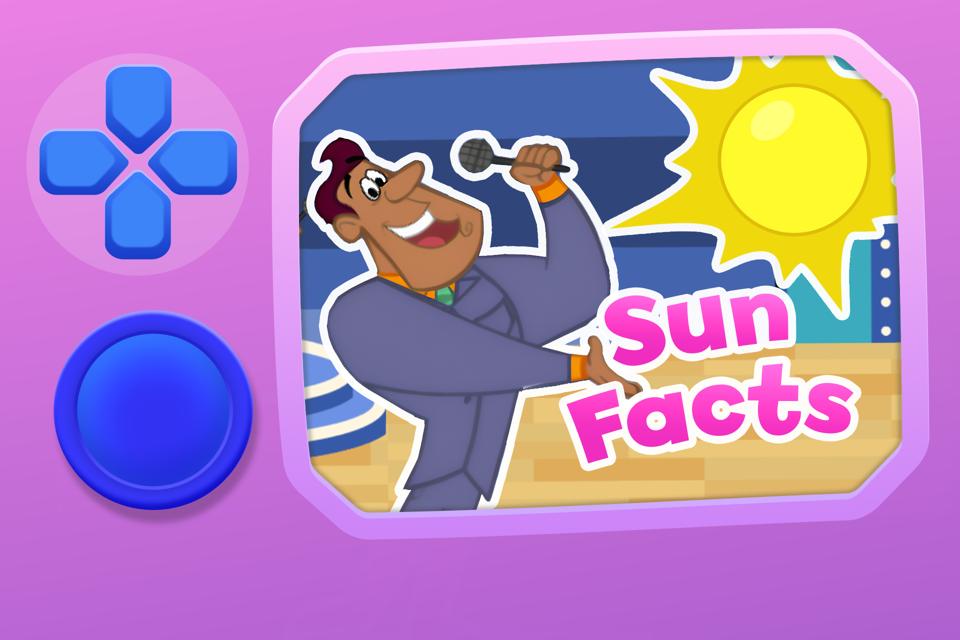
Interactive Space-Themed Learning Games
Children will explore planets, solar systems, space rocks, and more through fun and interactive games that help reinforce learning.
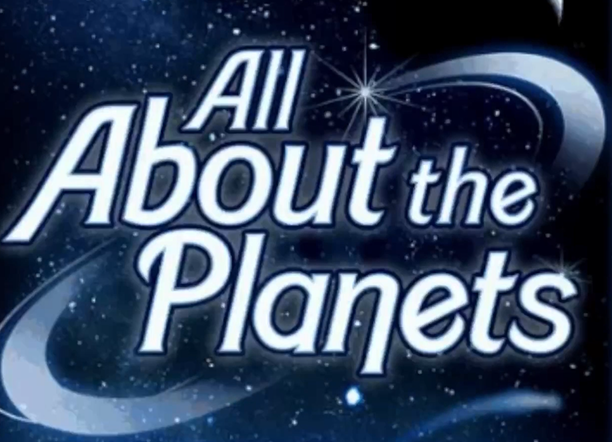
Teaching Videos & Books About Space
From Meet Our Moon to All About the Planets, these age-appropriate books and videos bring space to life and introduce concepts in ways kids can easily understand and enjoy.
Fun Science Facts
Quick, quirky videos delight kids with surprising, but true facts about space.
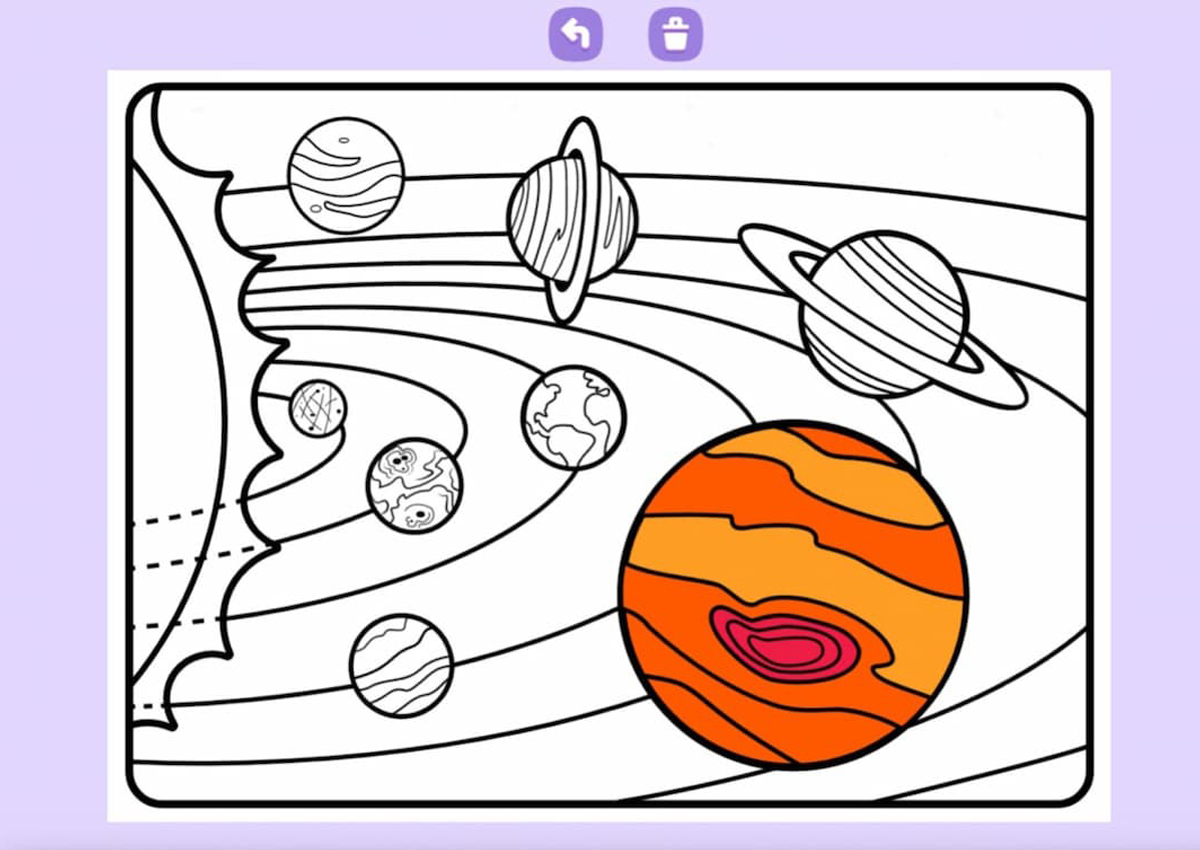
Online Coloring & Art Activities
Creative digital activities blend art with key concepts, giving kids another engaging way to grow their understanding of new topics.
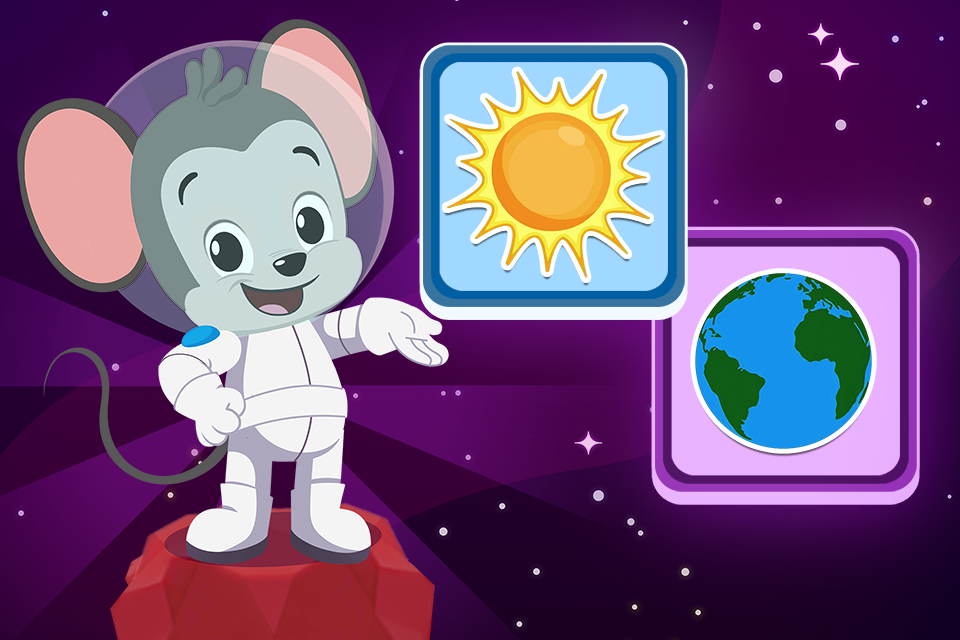
Review with Videos & Games
Izzy helps children celebrate what they’ve learned with review videos and final quiz-style games. Kids can share their new discoveries with family and friends and feel proud of their growing space knowledge.
Concepts Your Child Will Explore
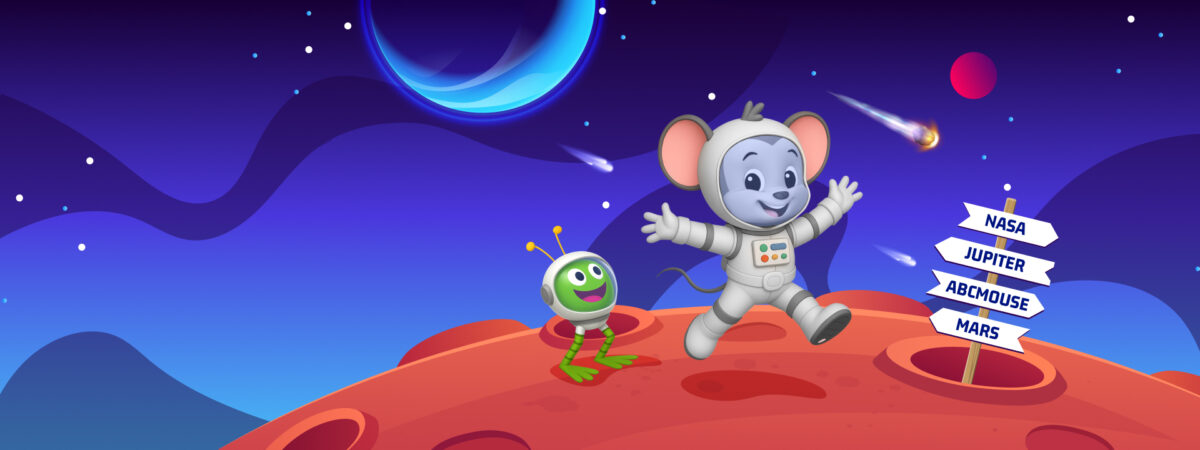
Your child’s journey through space begins with foundational topics that build their understanding of the universe. Inspired by real NASA science and designed with ABCmouse’s playful approach to early learning, the lessons tap into the big questions kids naturally wonder about.
🌞 Earth and the Sun – Why does the Sun move across the sky? Where does it go at night?
🌙 Earth and the Moon – What makes the Moon glow? Why does it look different each night?
✨ Stars and Galaxies – What are stars made of? How many stars are there?
🪐 Planets and Space Rocks – What do we know about planets, asteroids, and comets?
🚀 Space Explorers and Astronauts – How do astronauts live and work in space?
Why Parents & Teachers Love It
The ABCmouse Space Collection in partnership with NASA is designed for kids in Pre-K through 2nd grade, with activities that build science, literacy, and problem-solving skills.

✔️ Age-appropriate learning inspired by real NASA science.
✔️ Engaging storytelling that makes big ideas easy to understand.
✔️ Interactive activities that mix science with creativity.
✔️ Aligned with early learning goals while still being fun and playful.
Parents and teachers can feel confident knowing that every activity encourages curiosity, creativity, and learning. Children will build lasting skills and knowledge that they can use today and wherever their journey takes them…even outer space!

